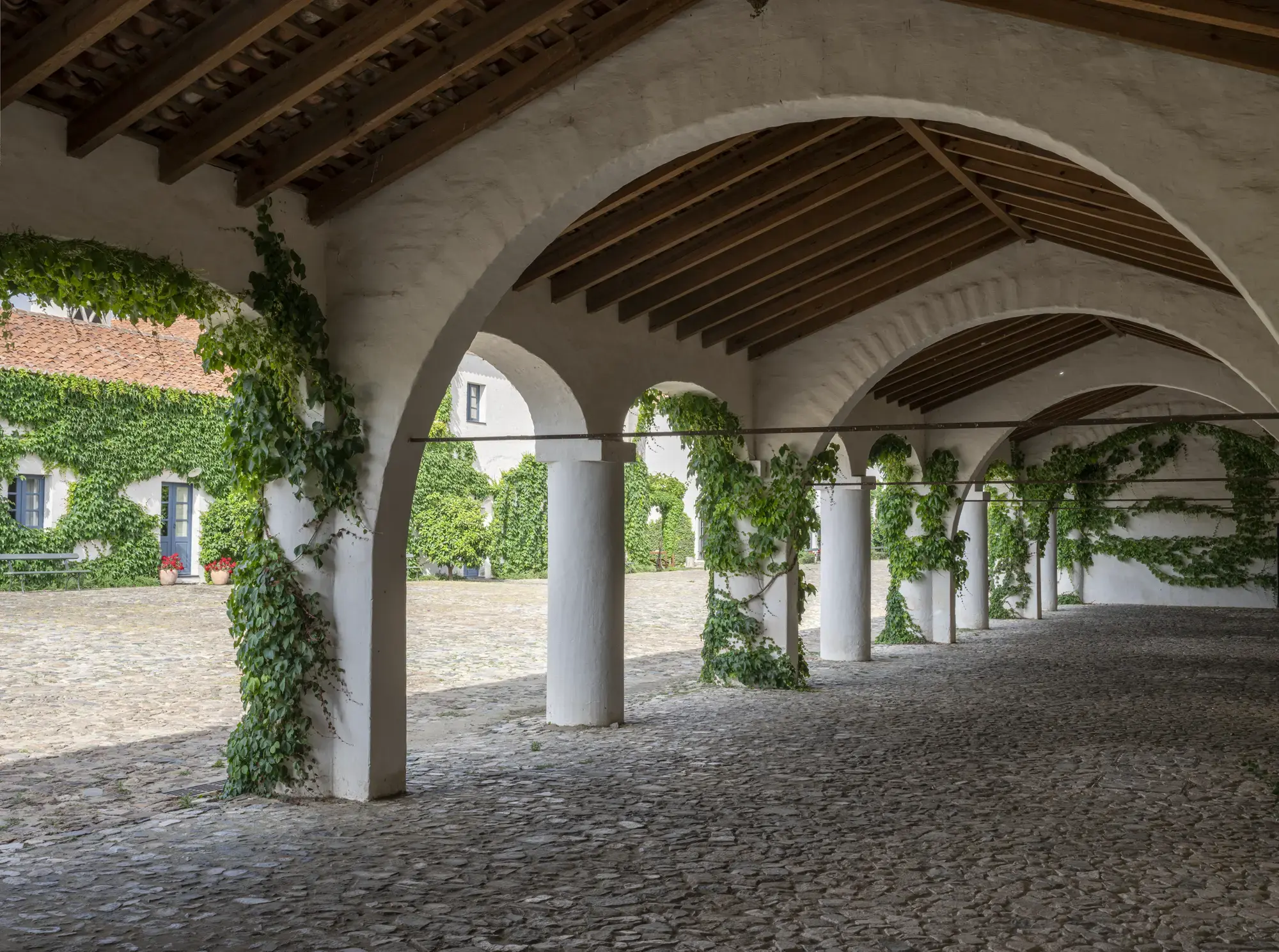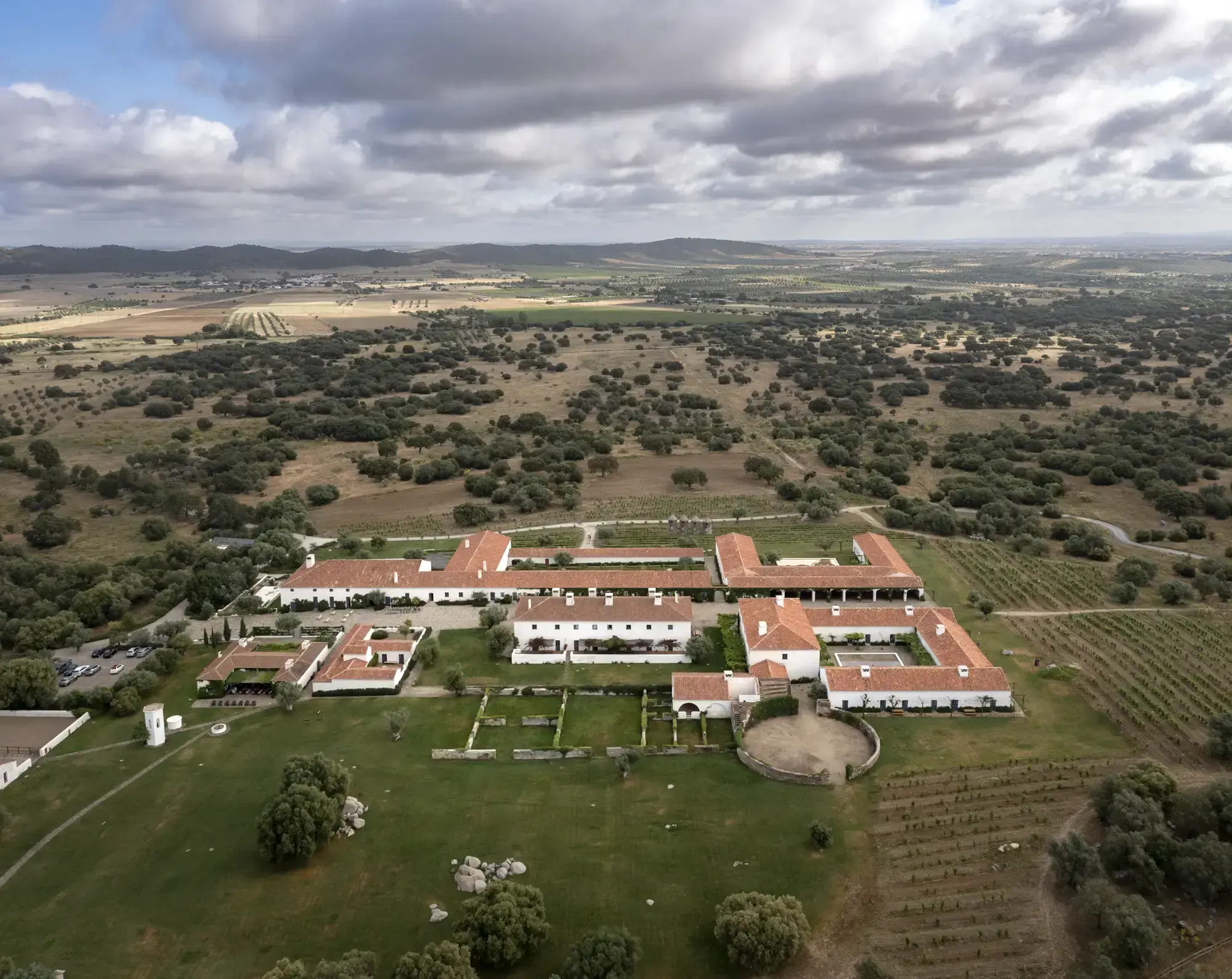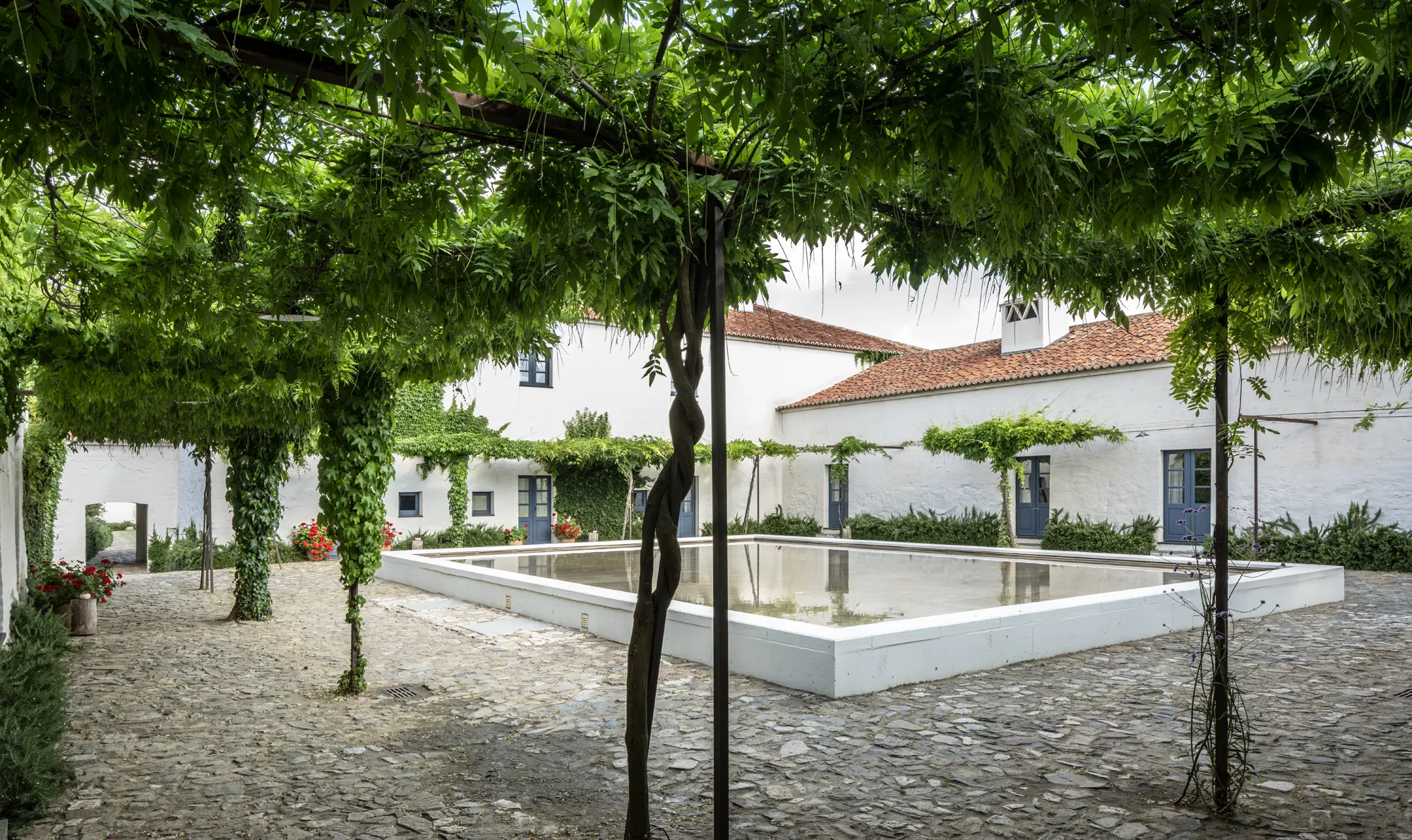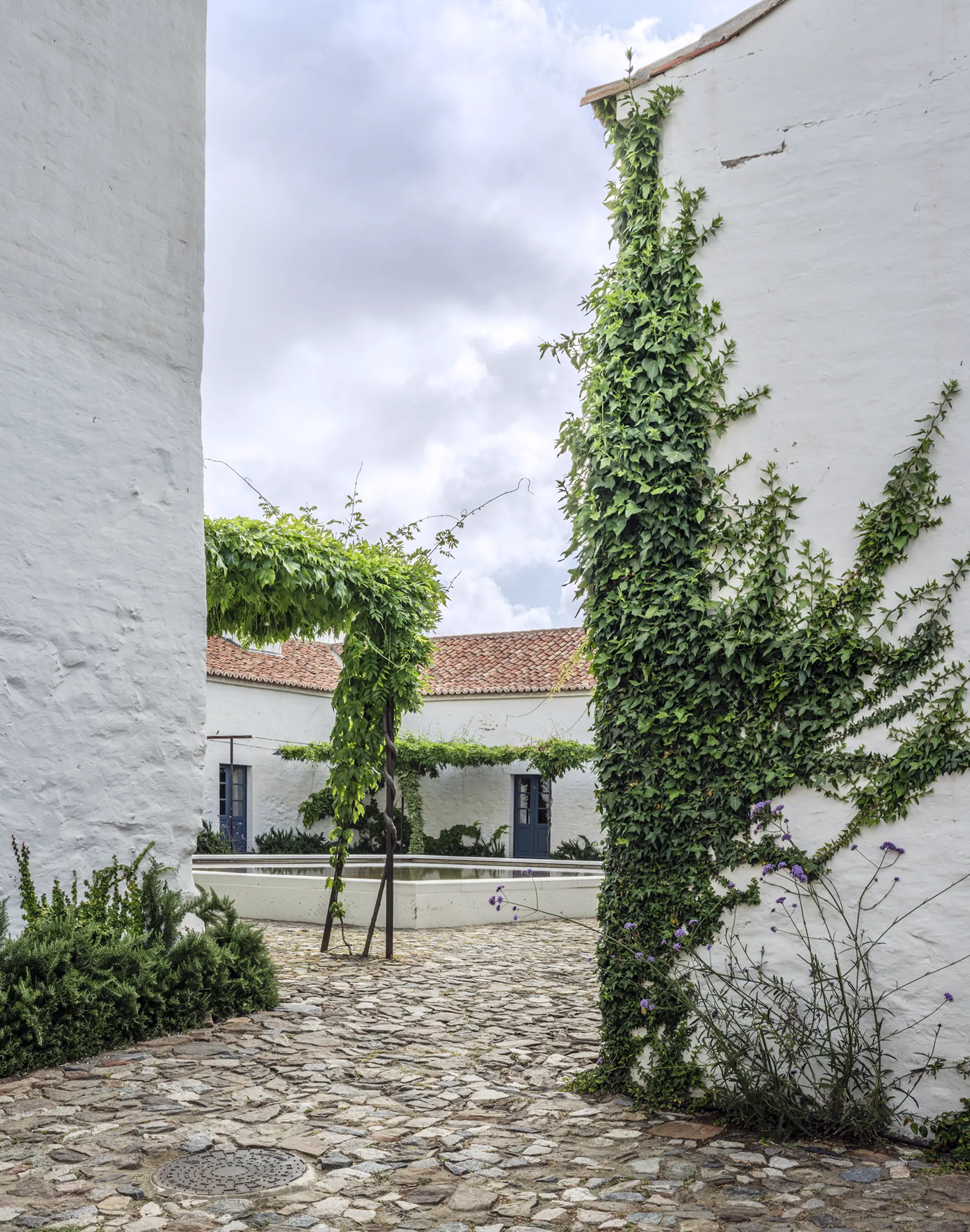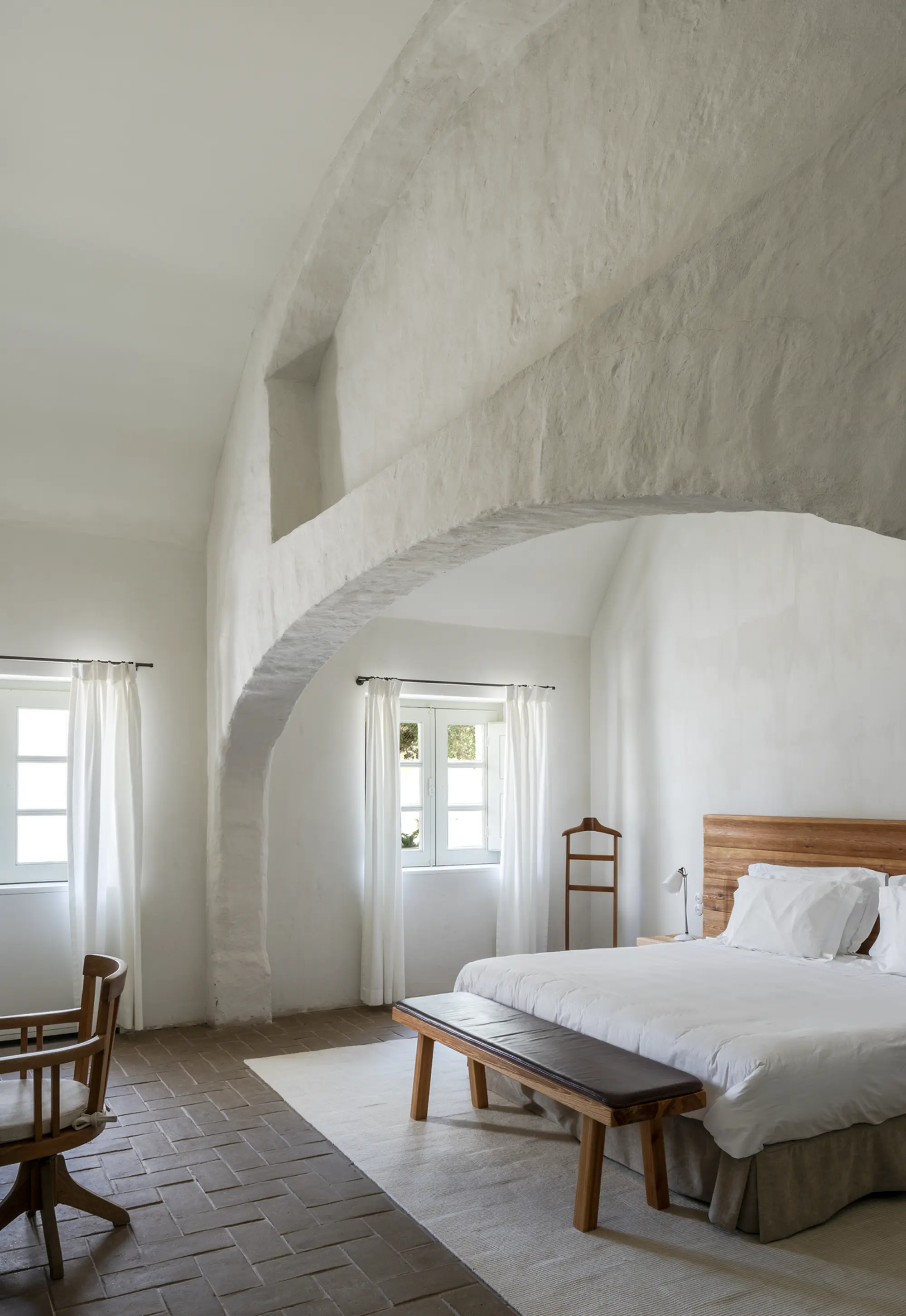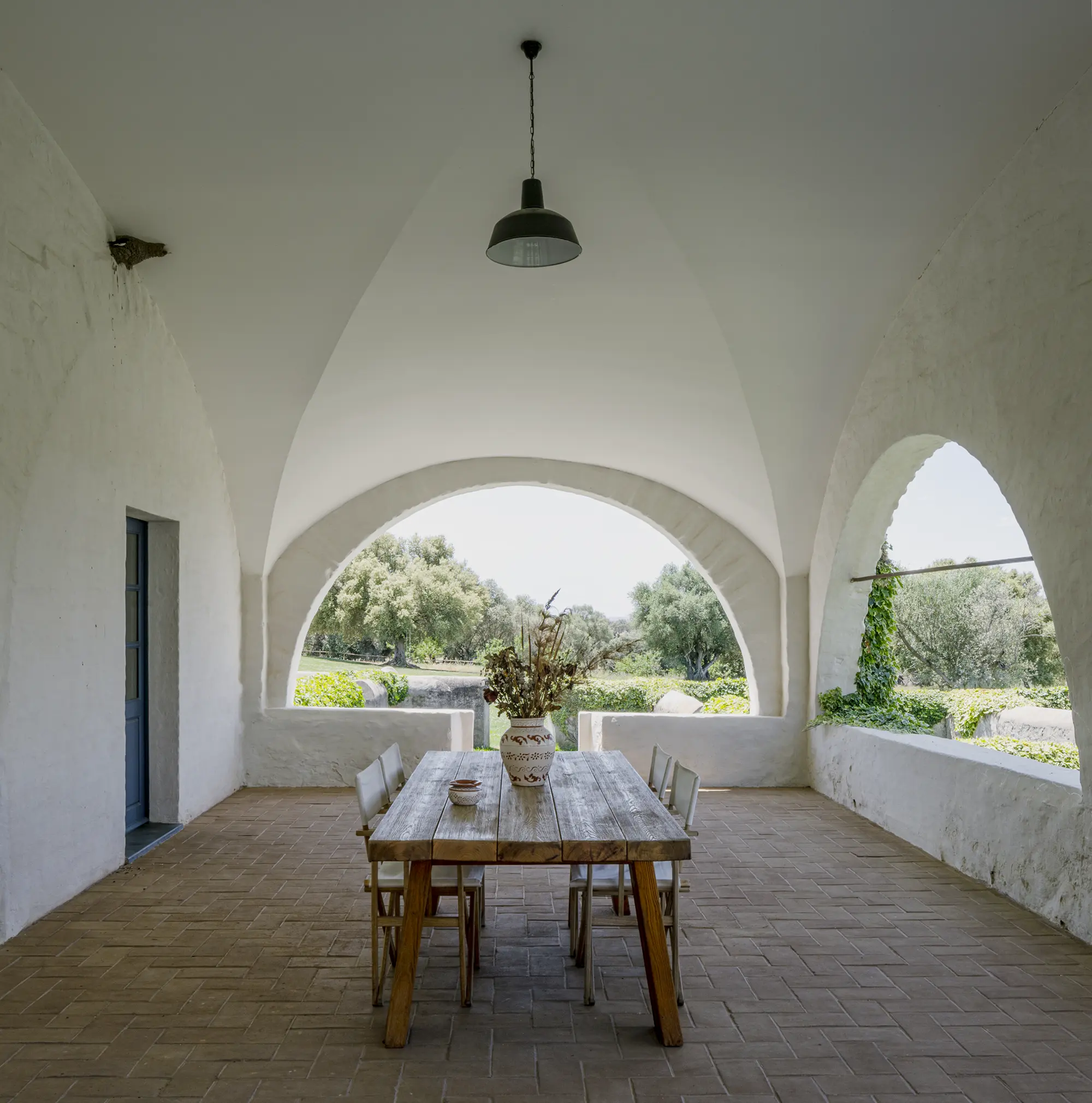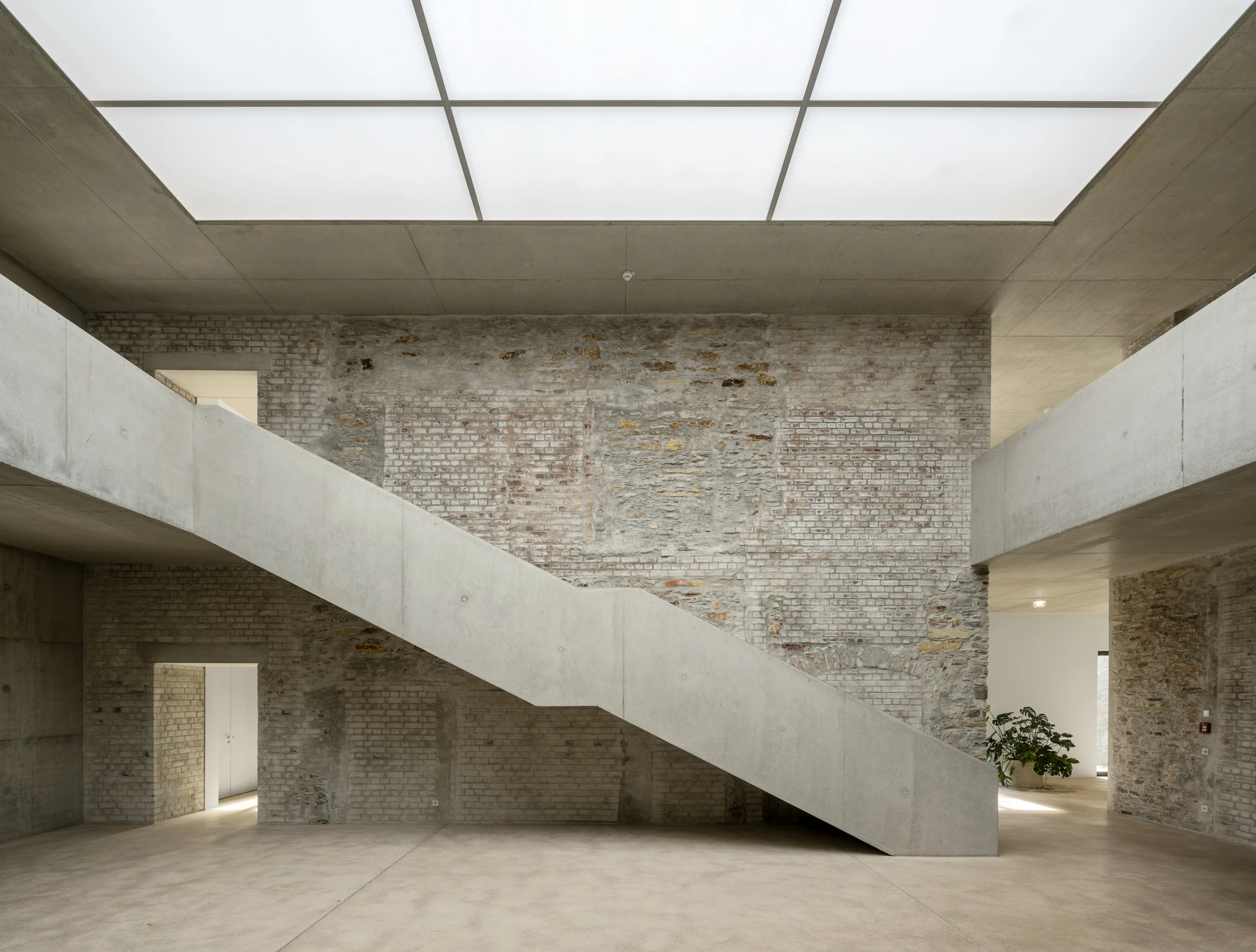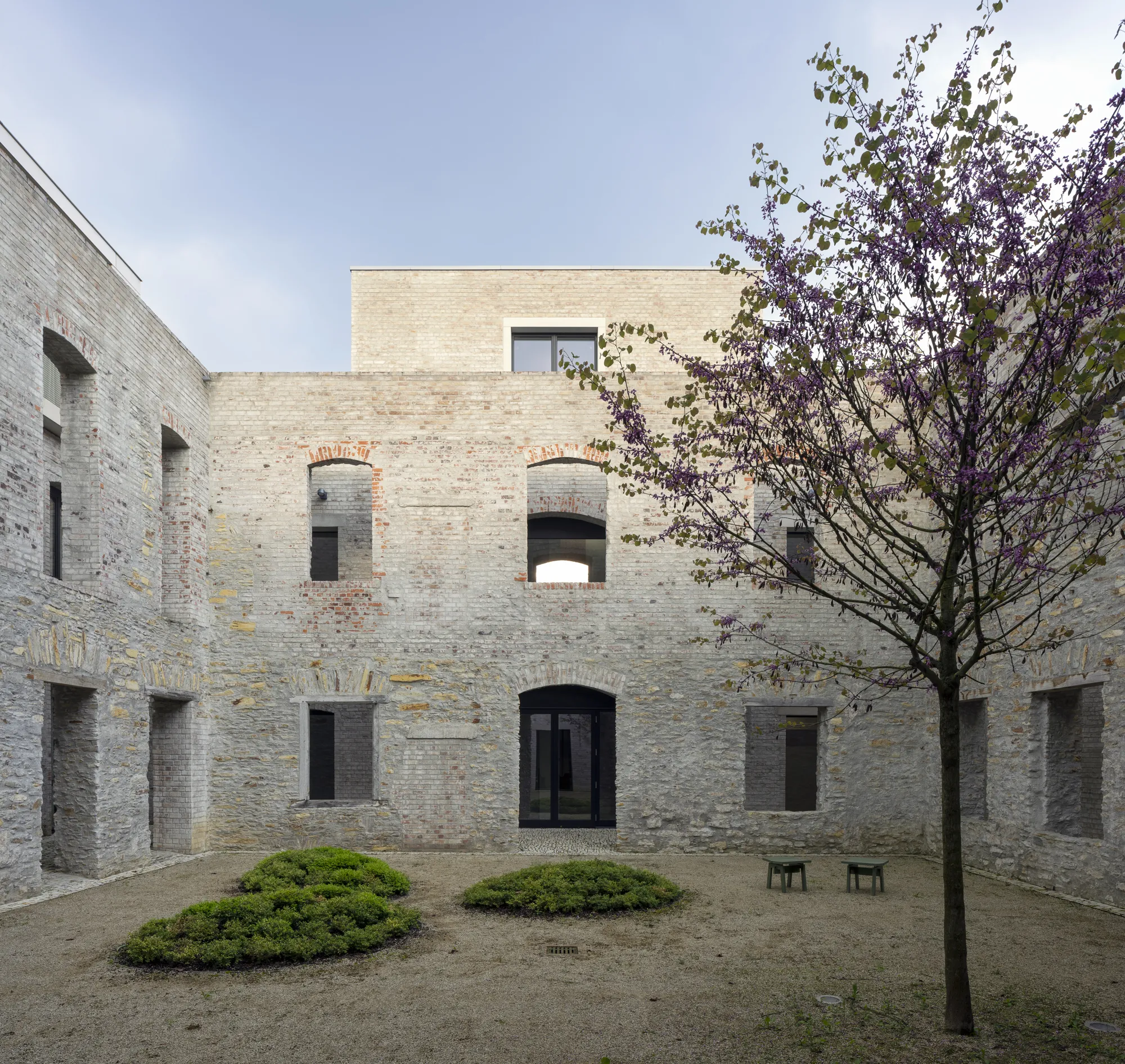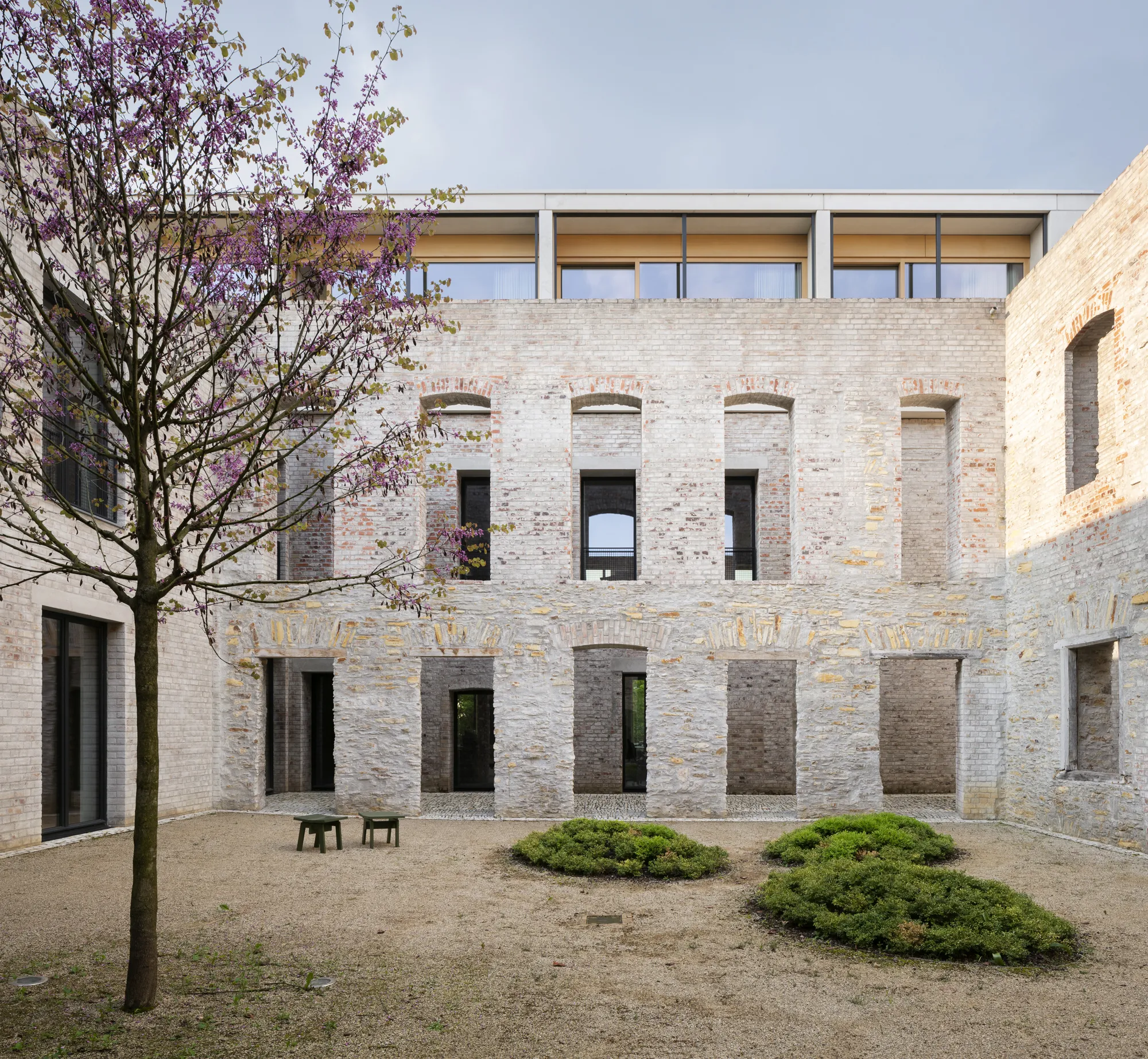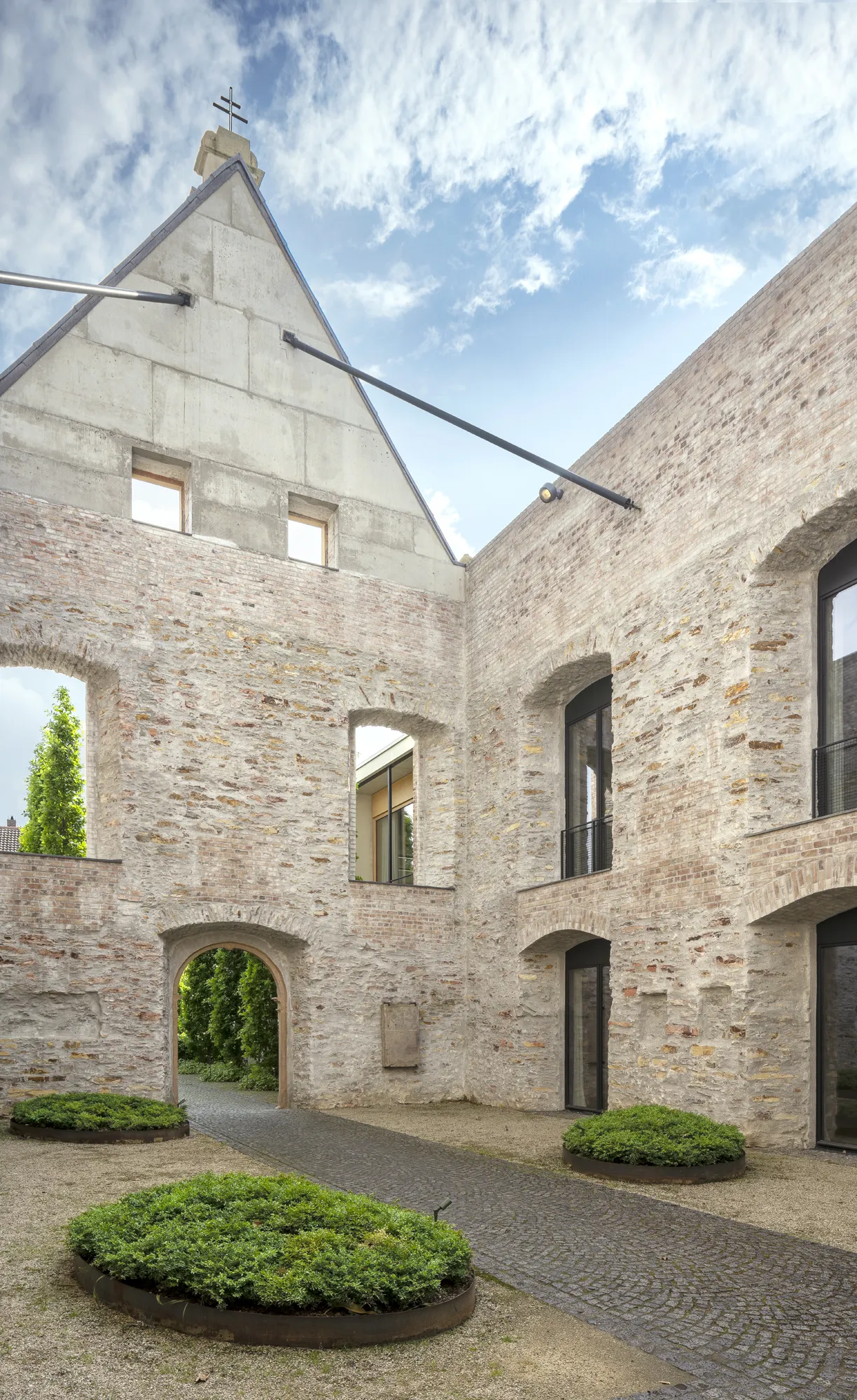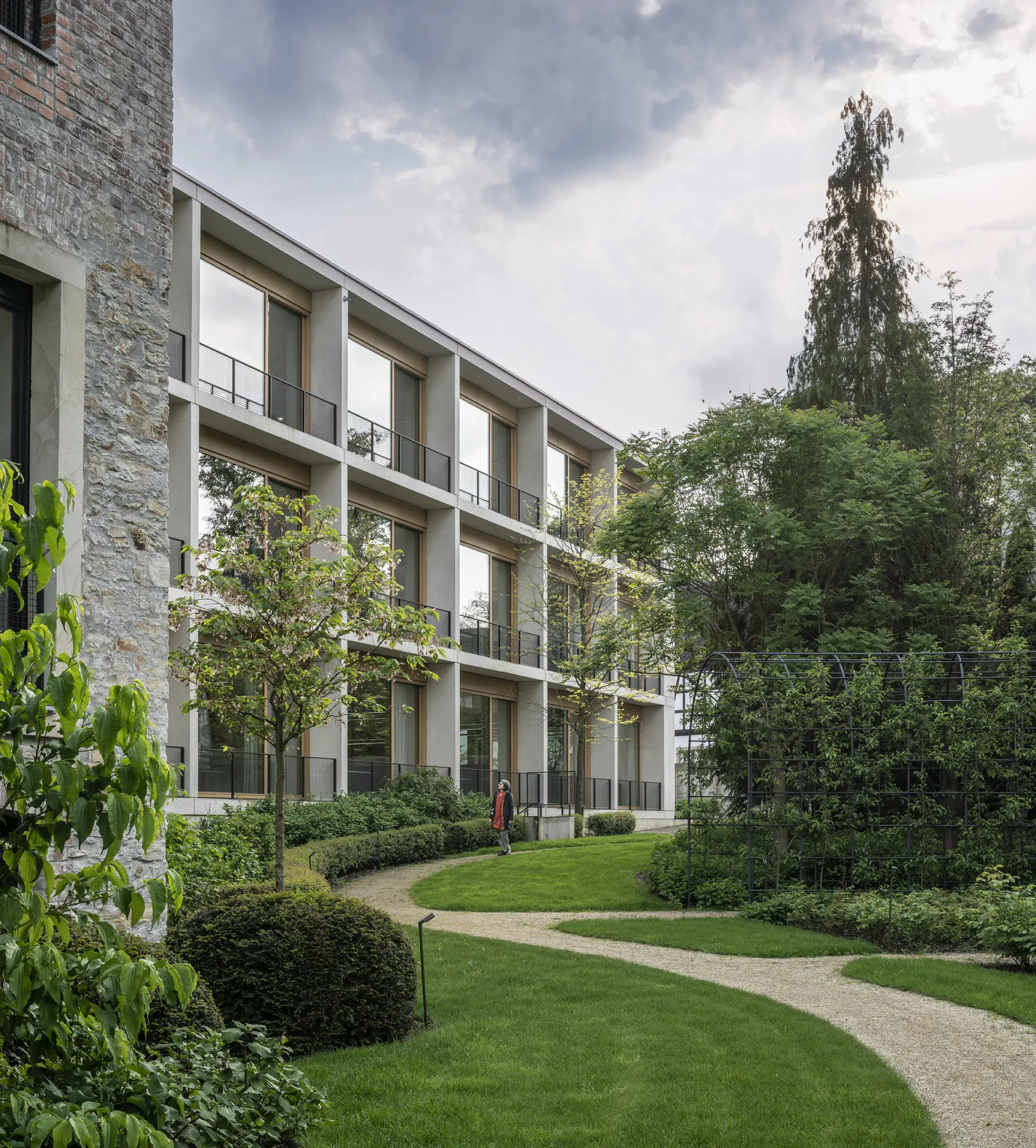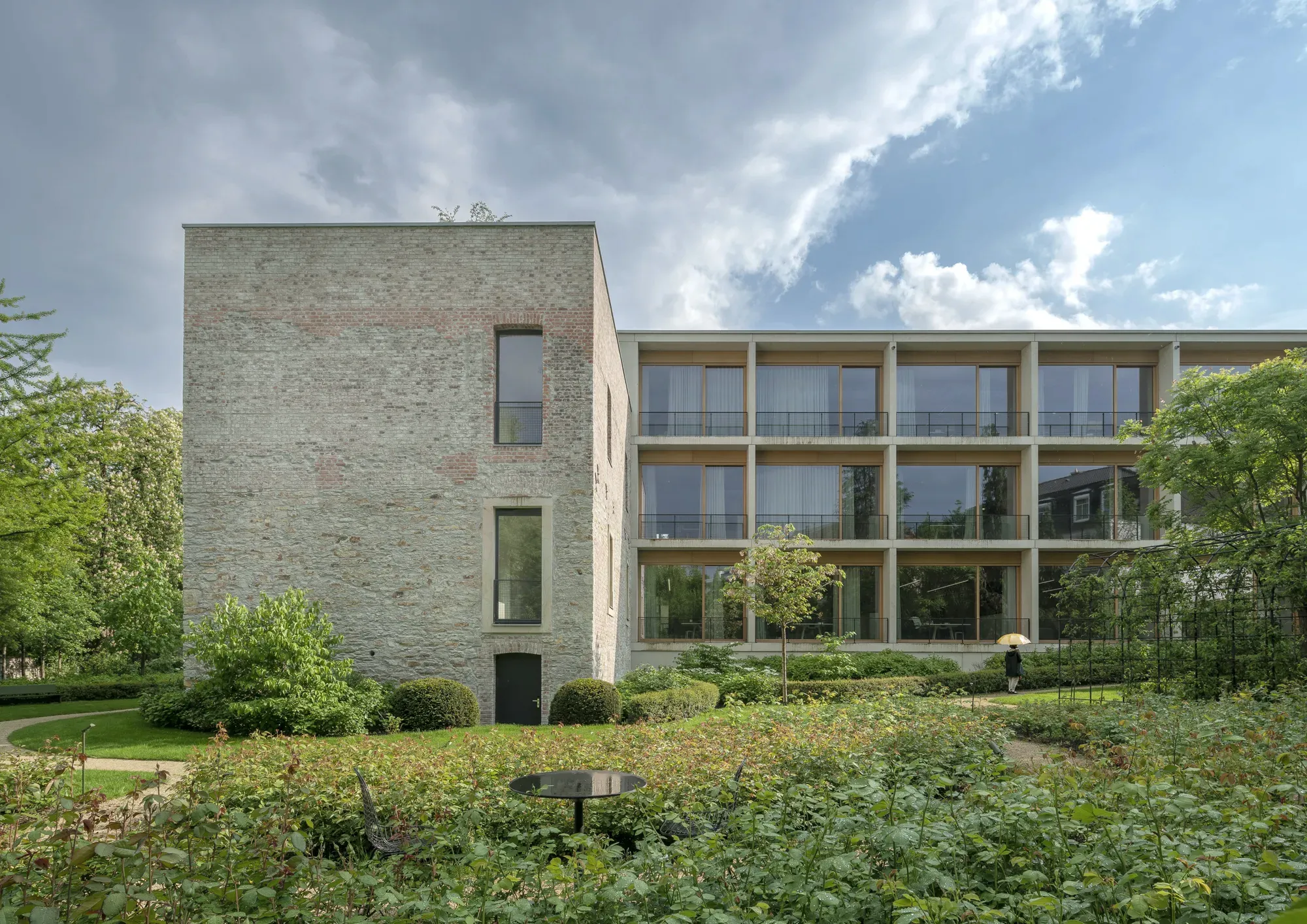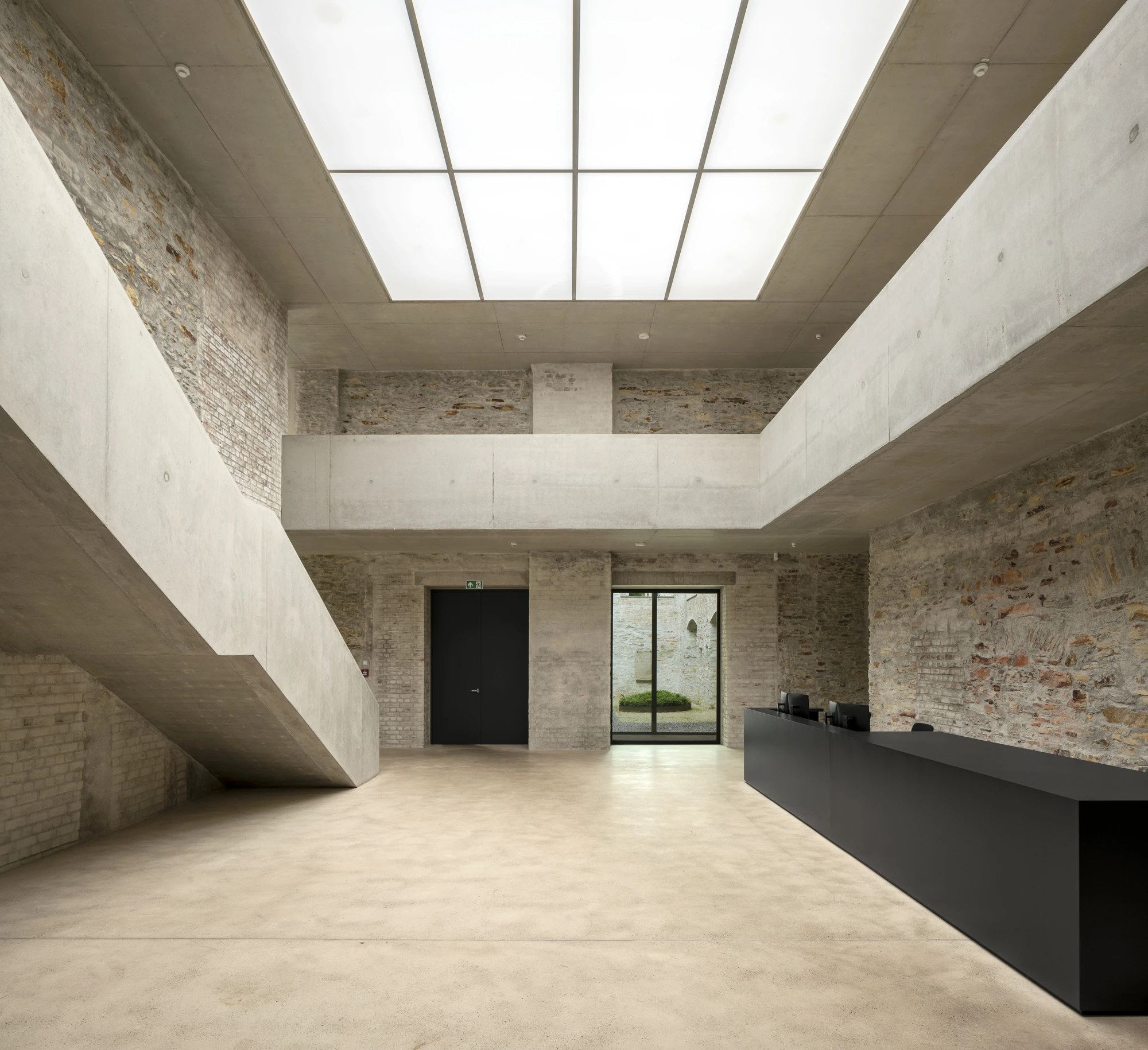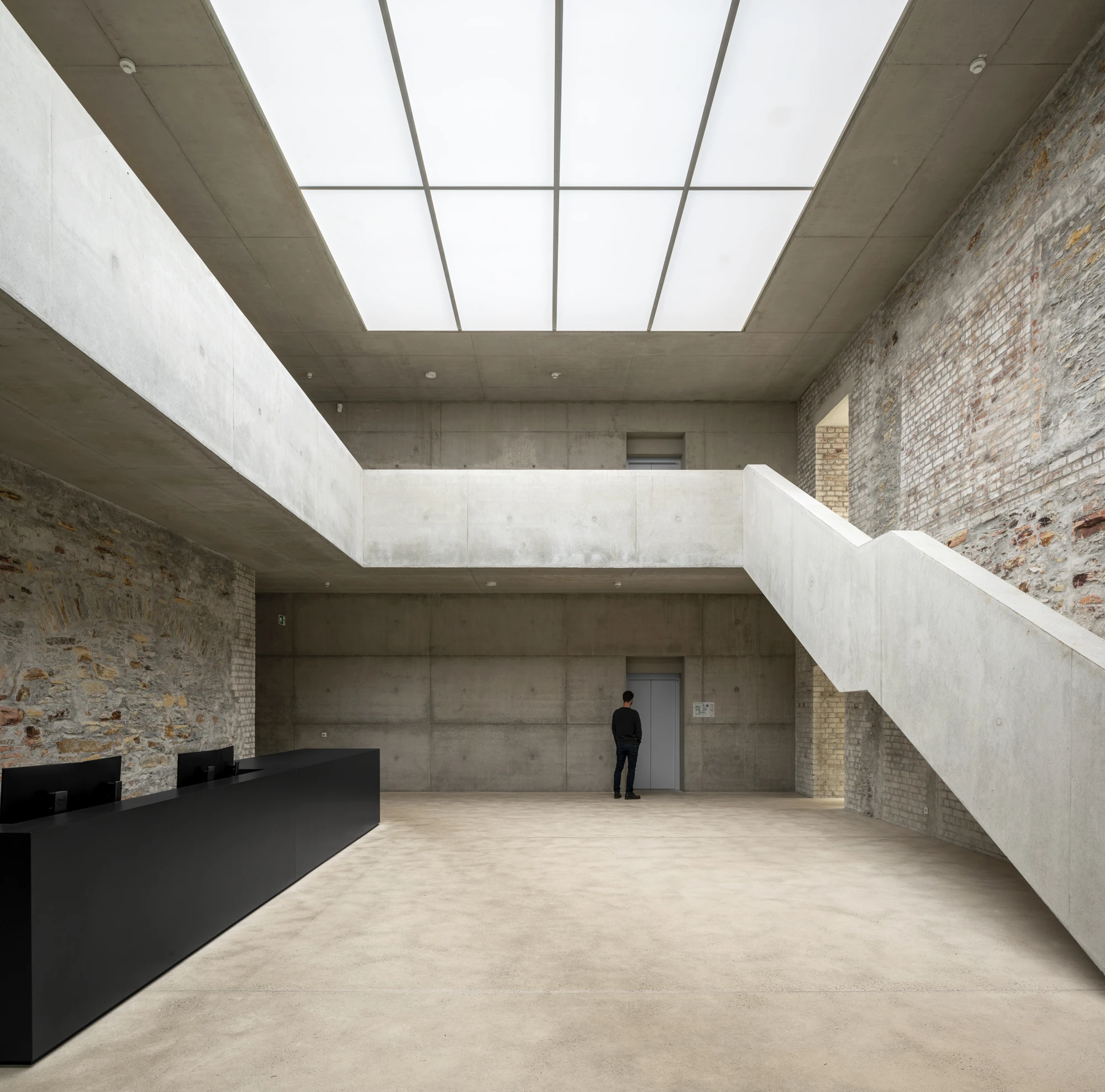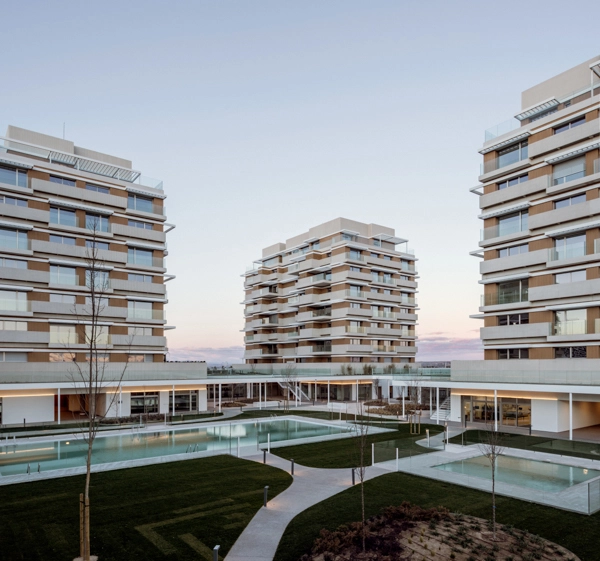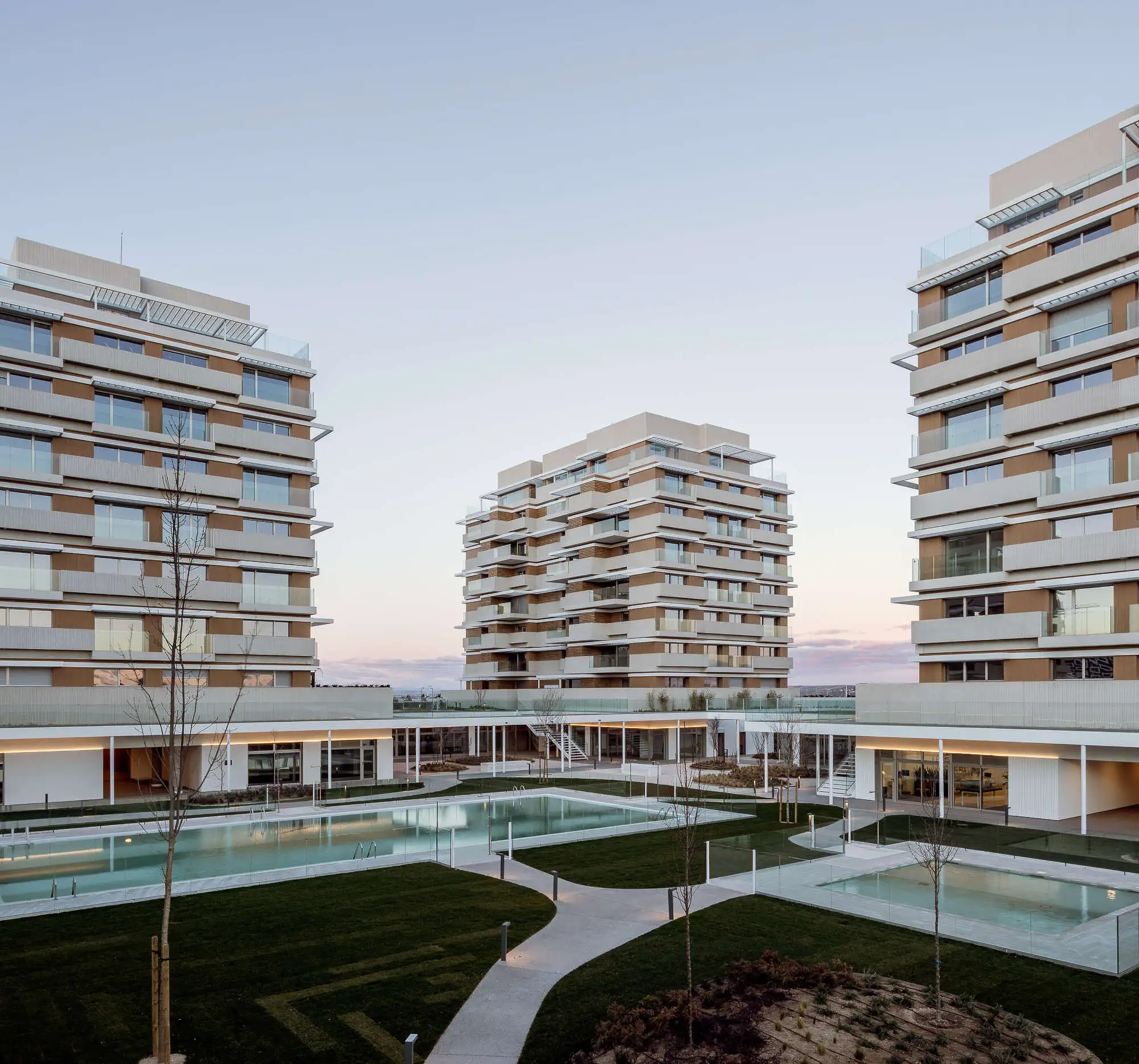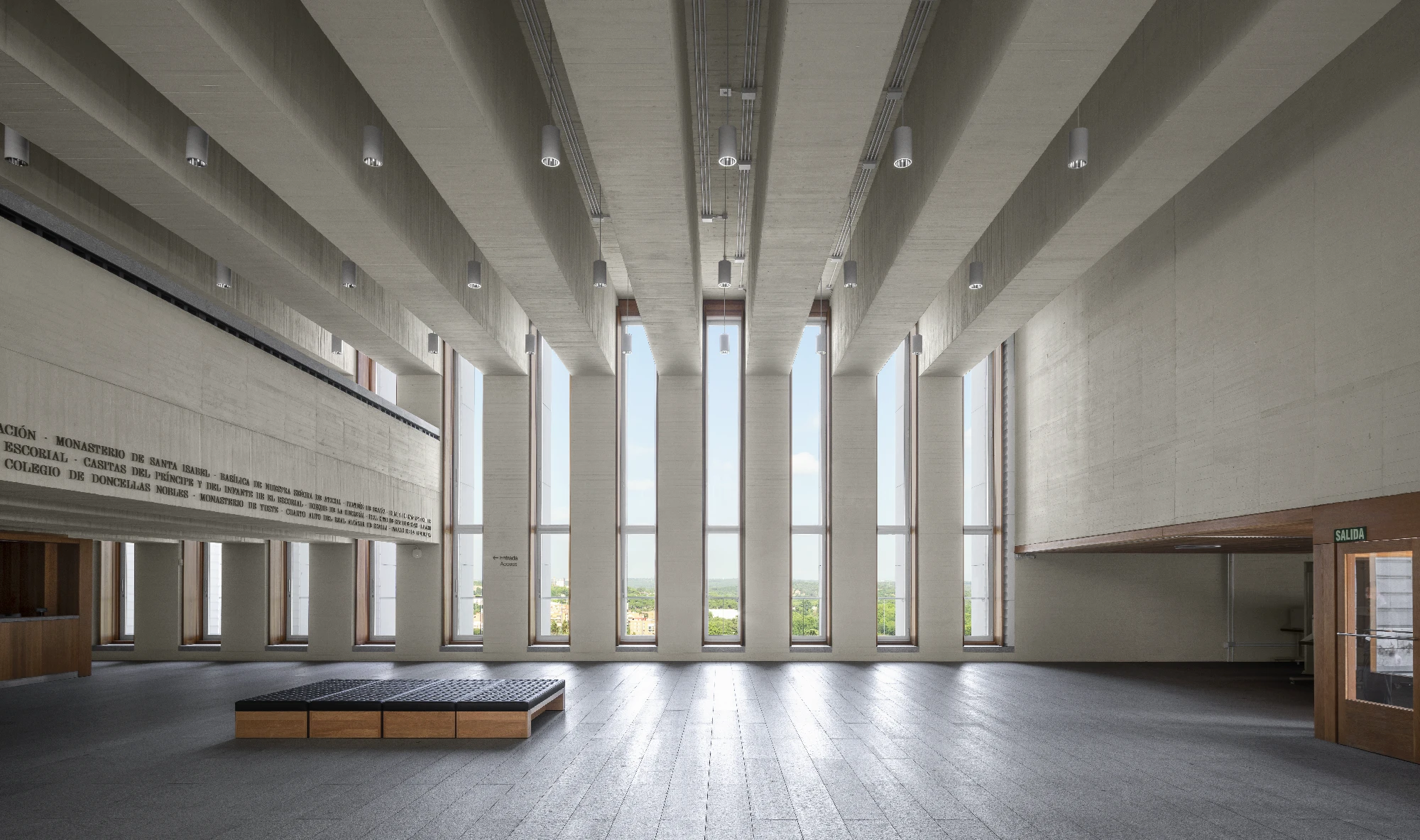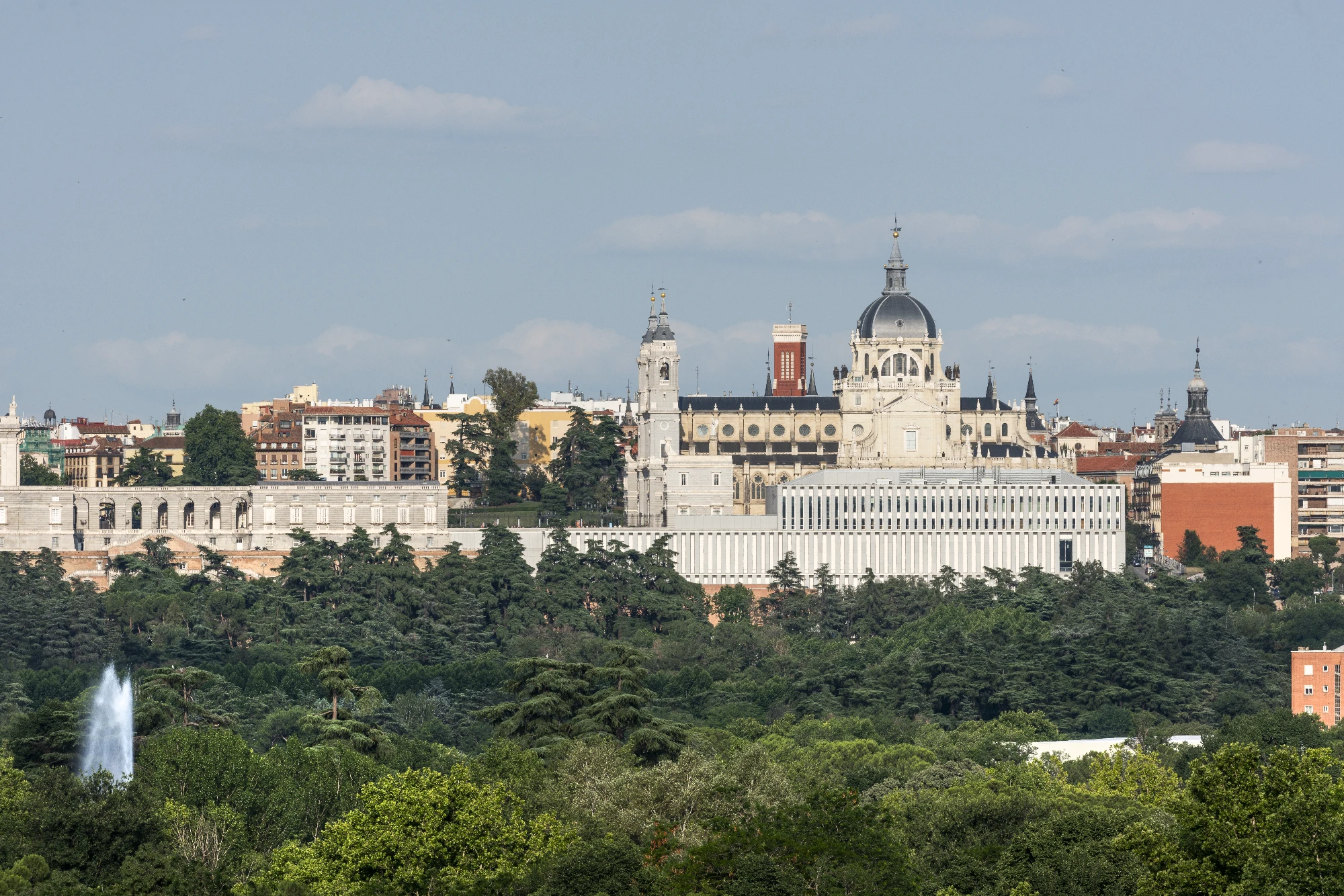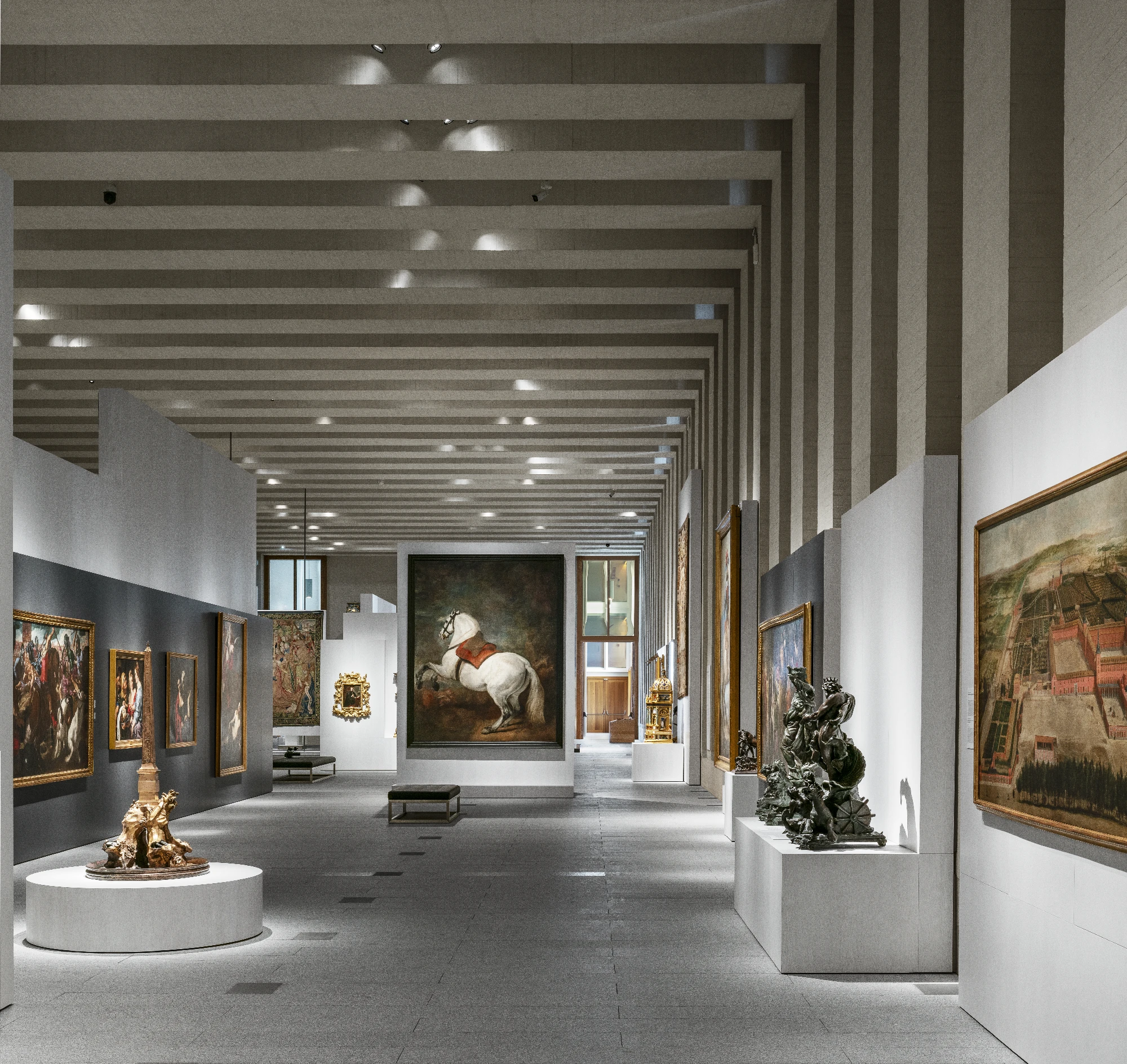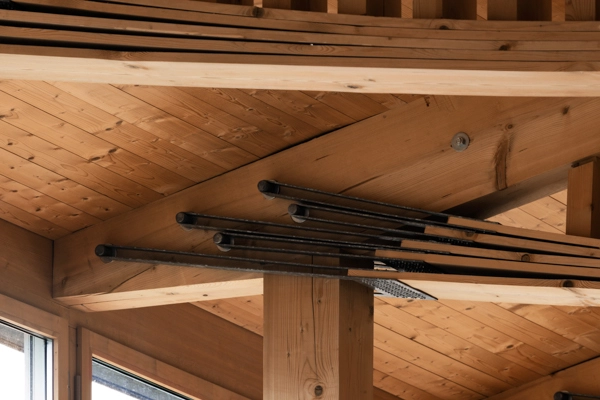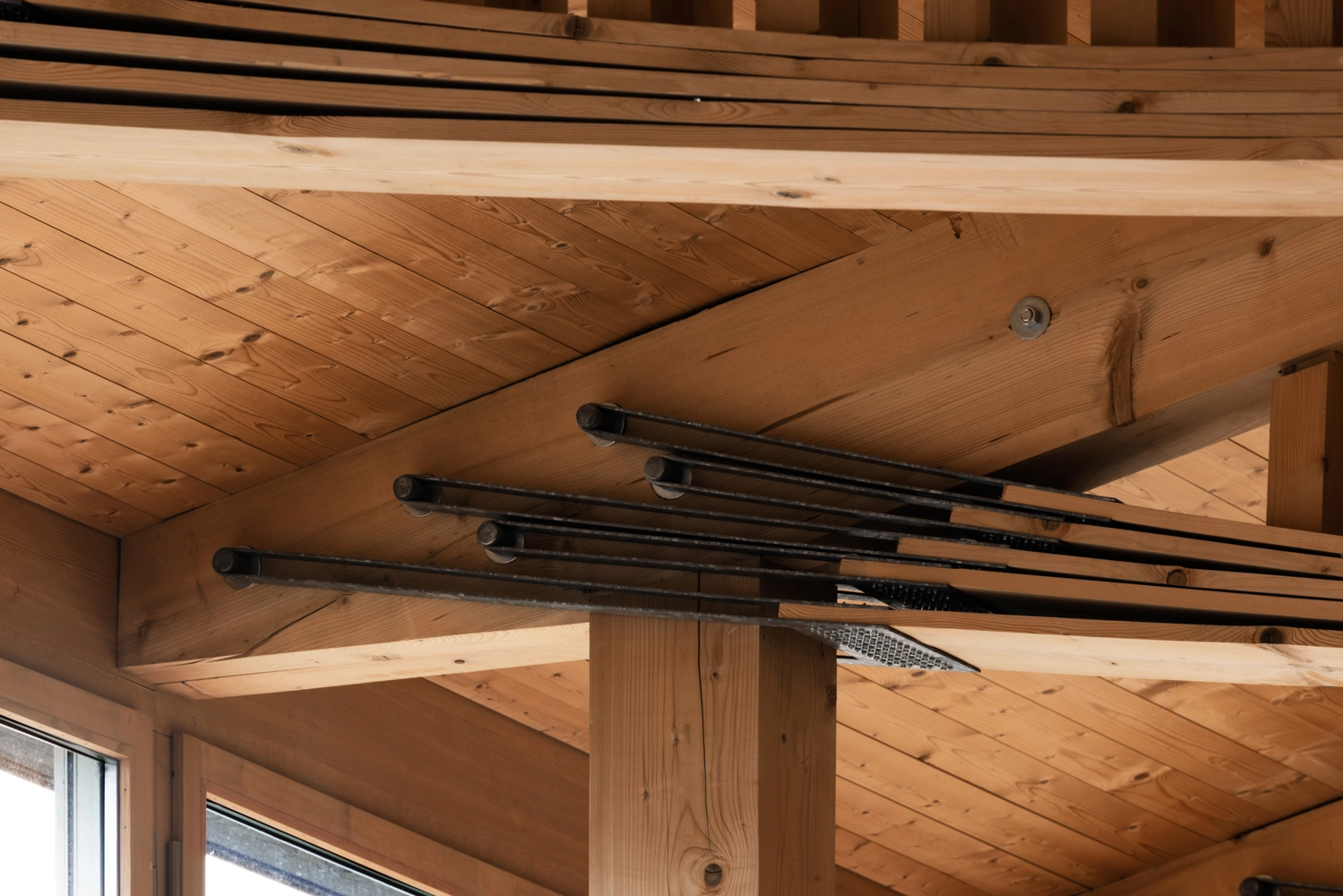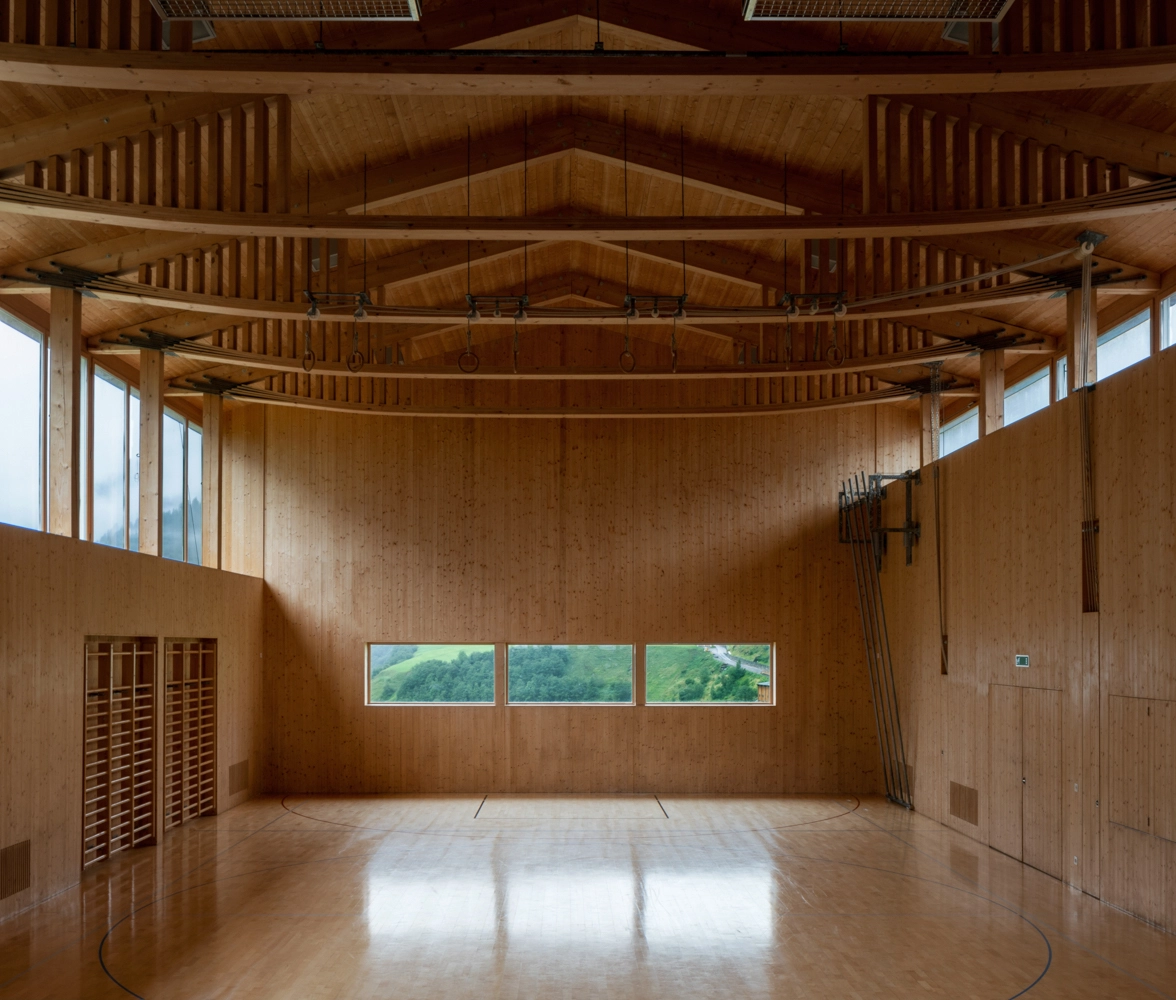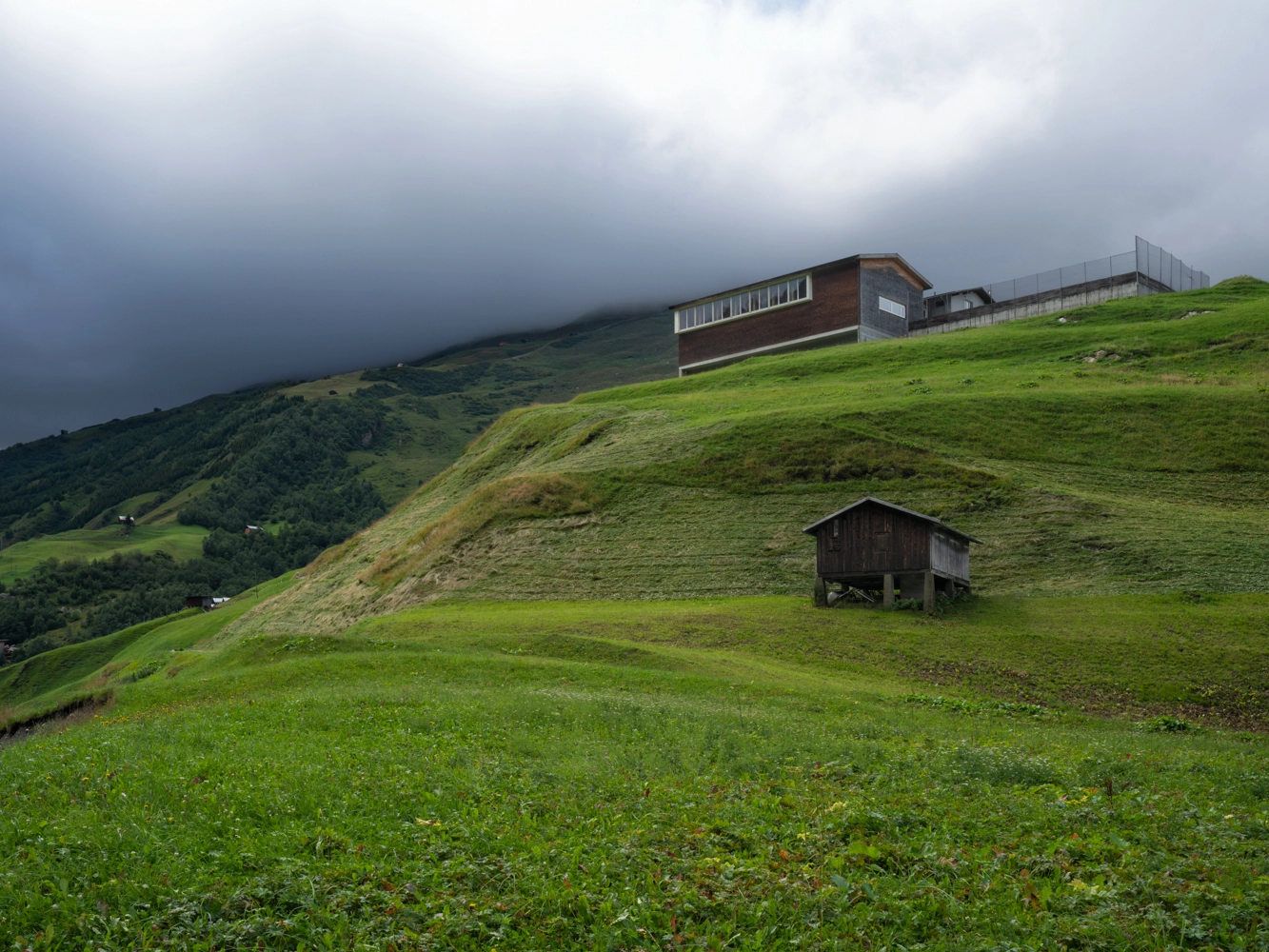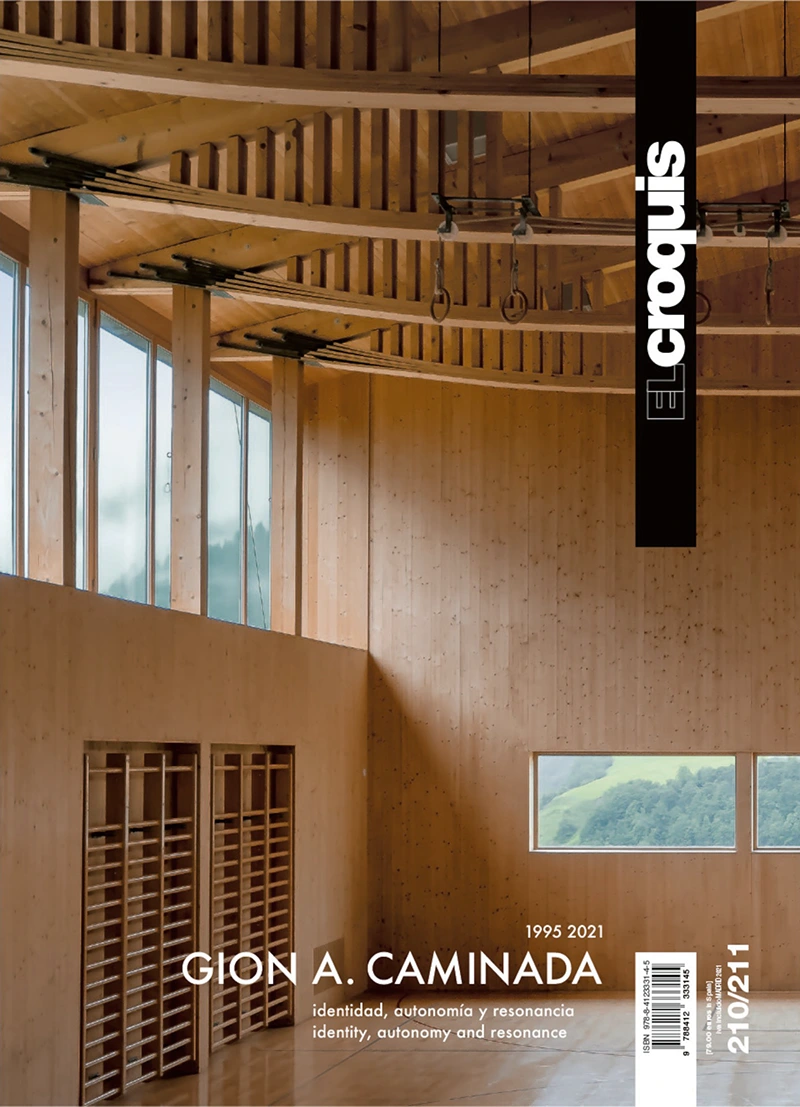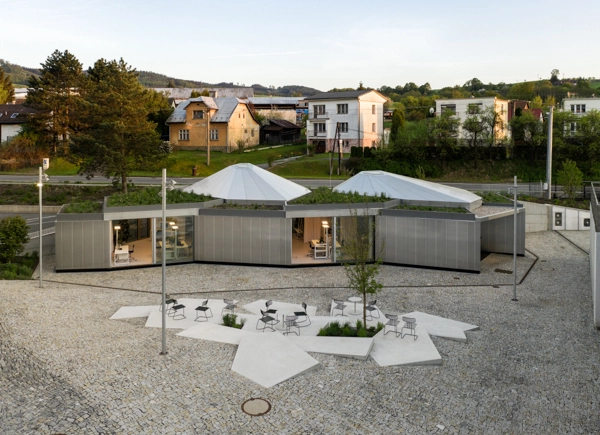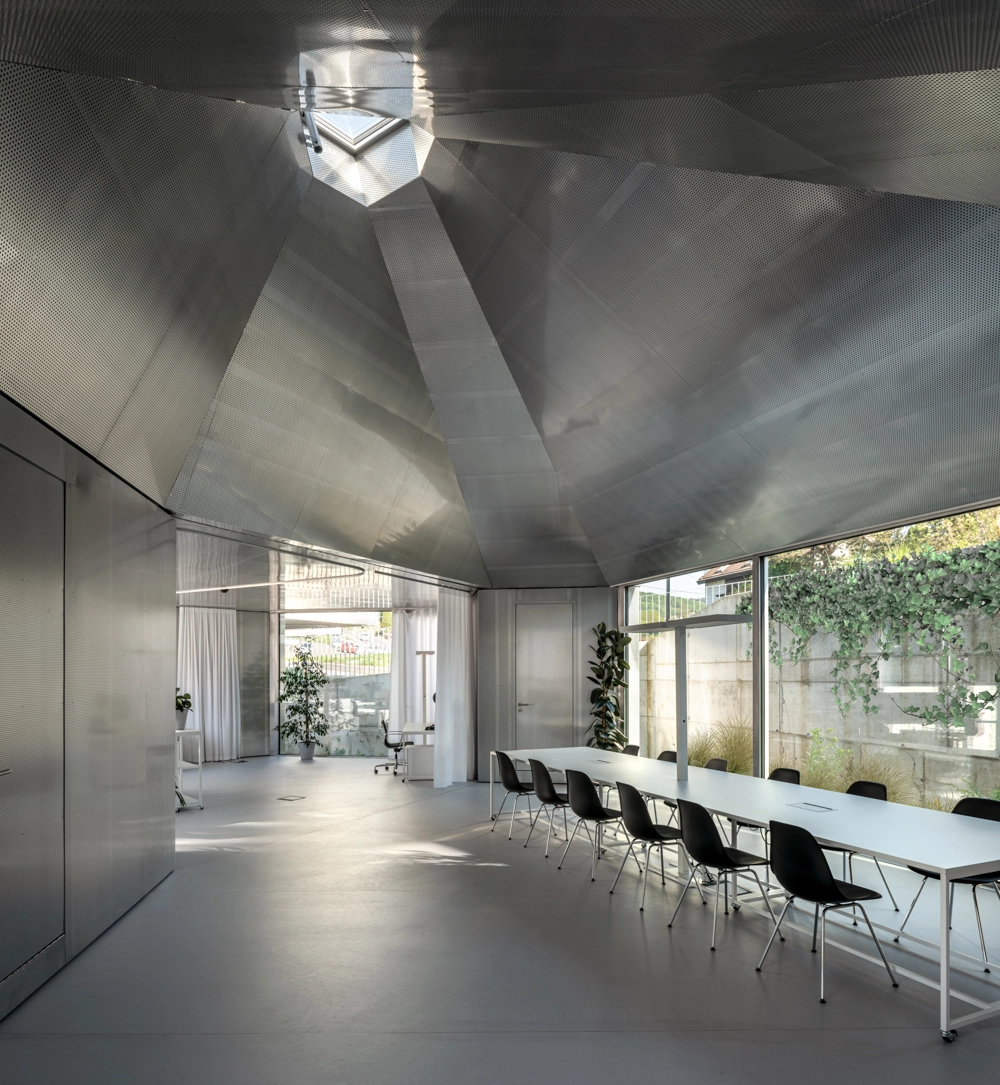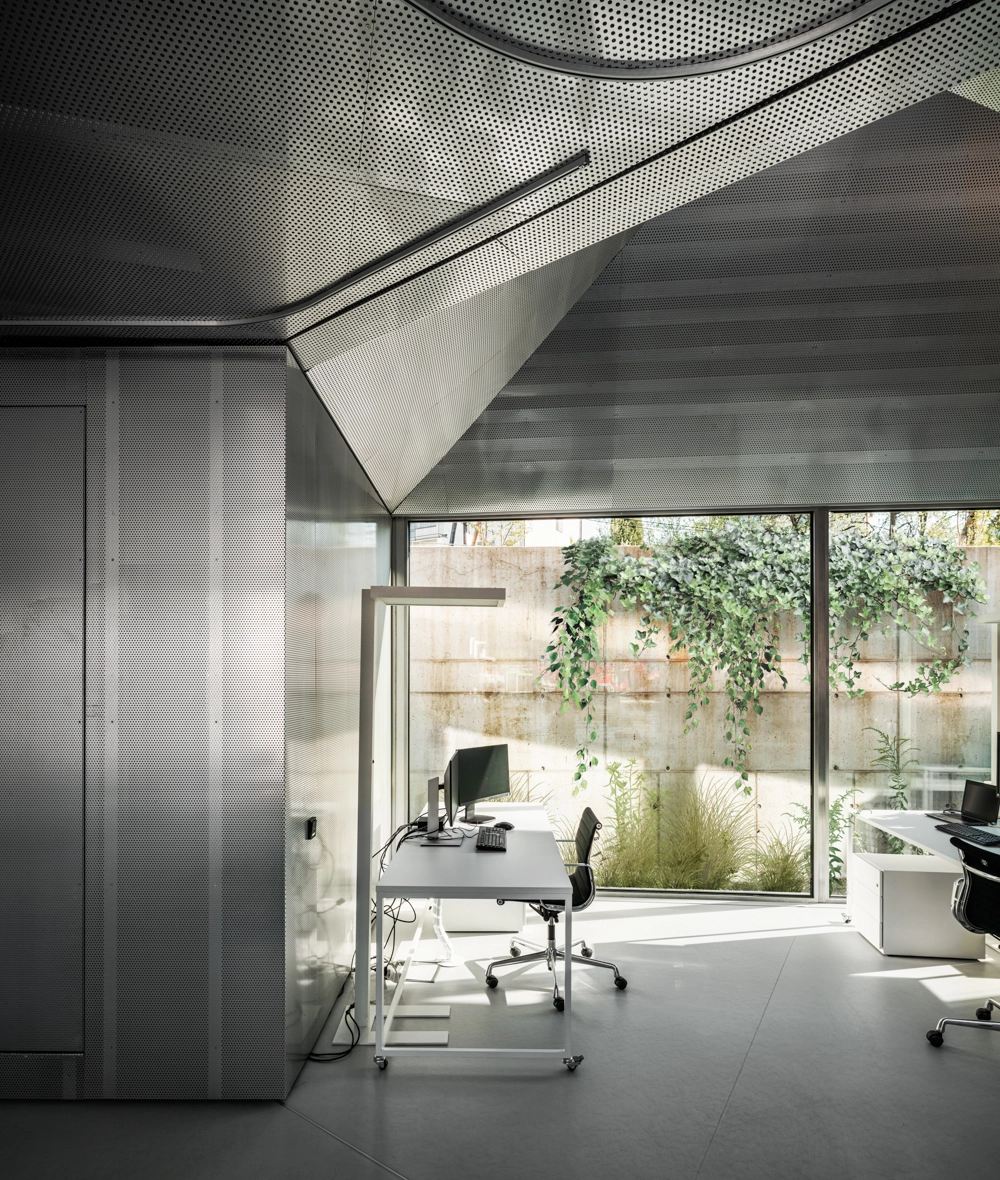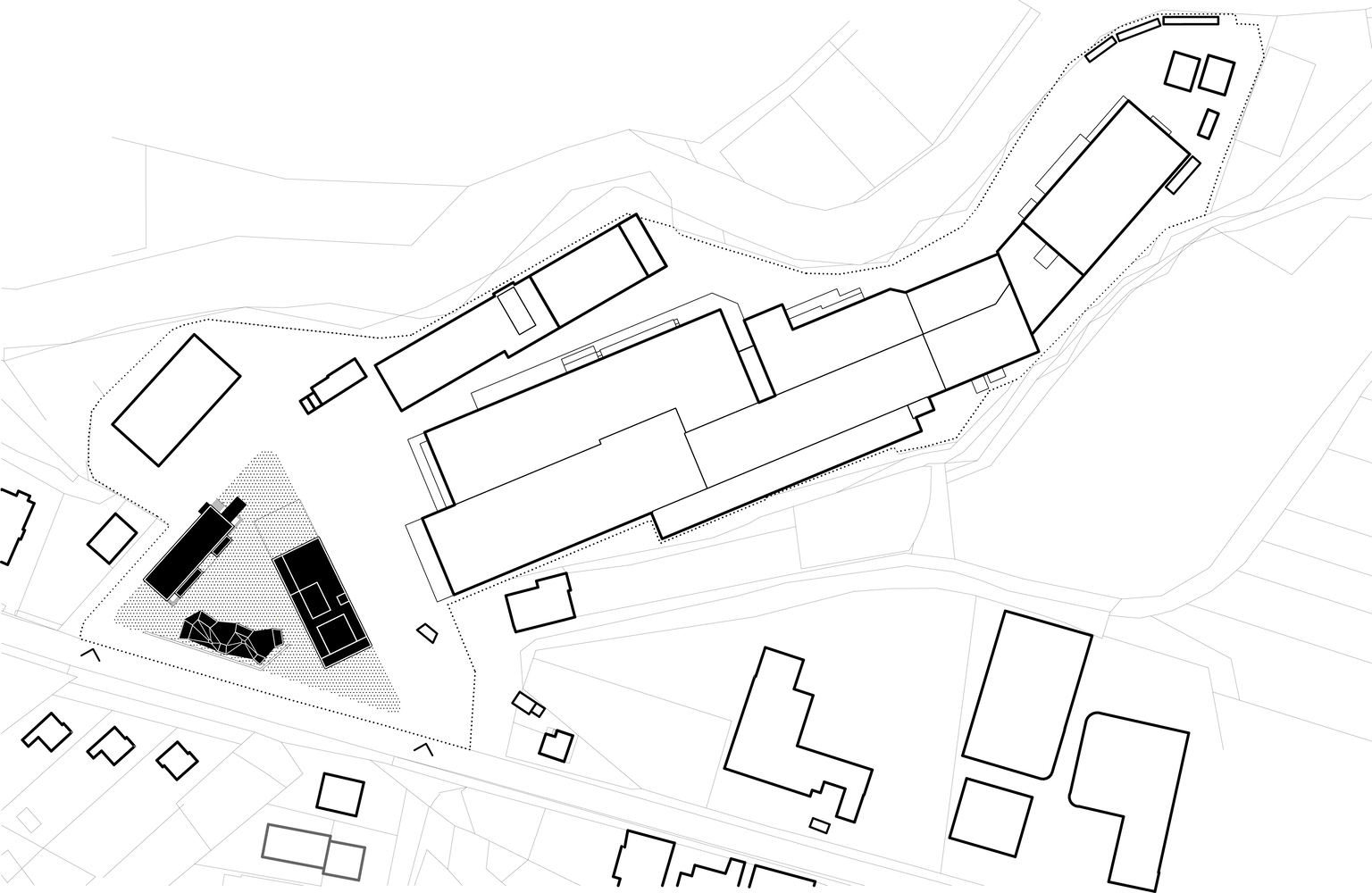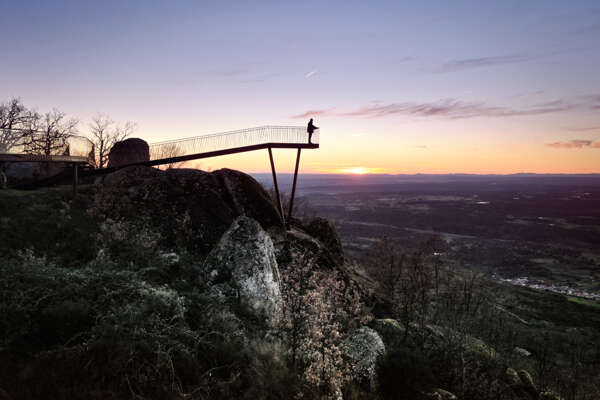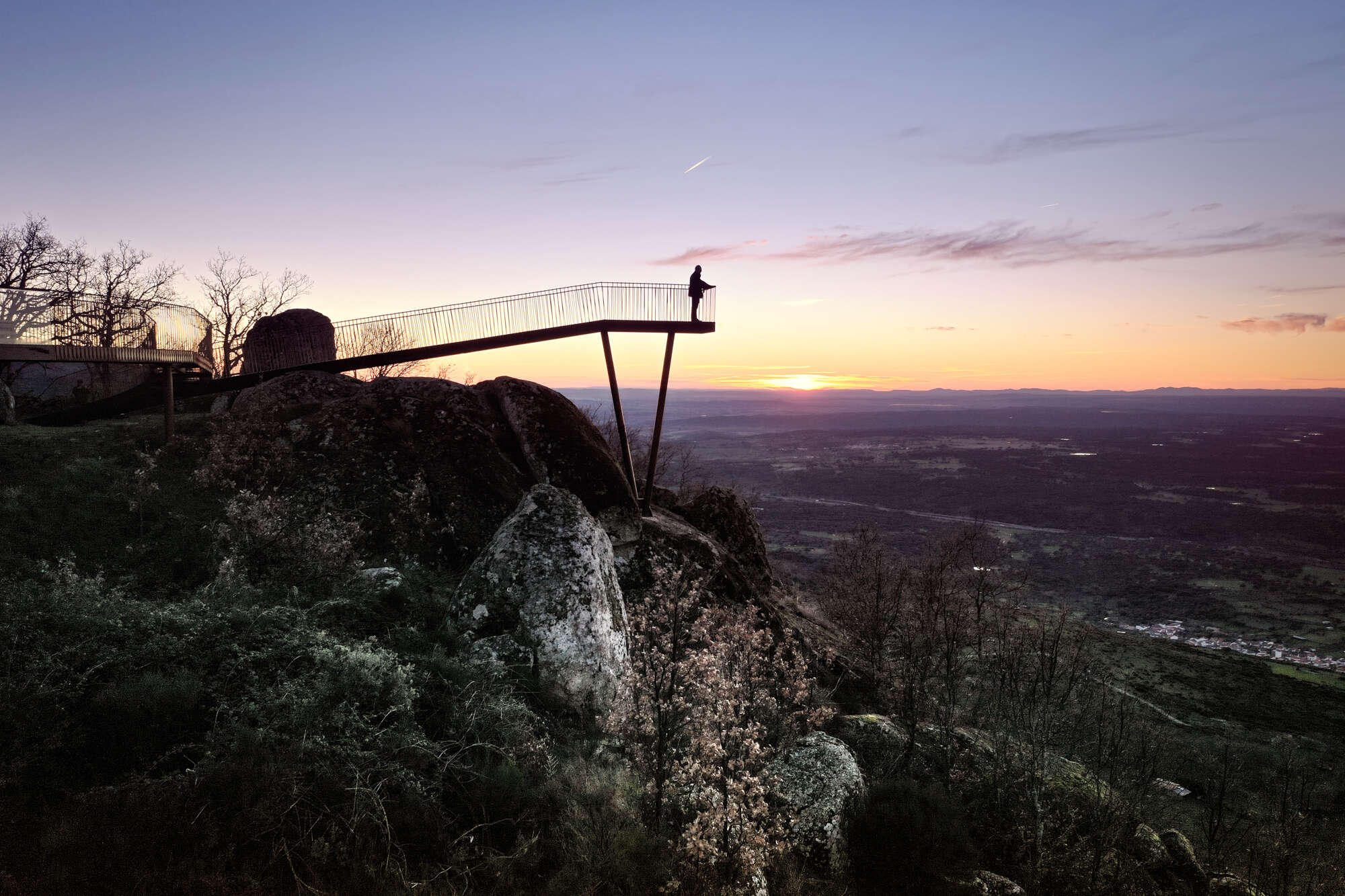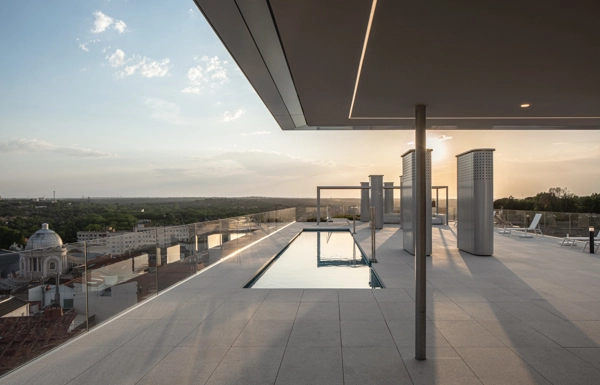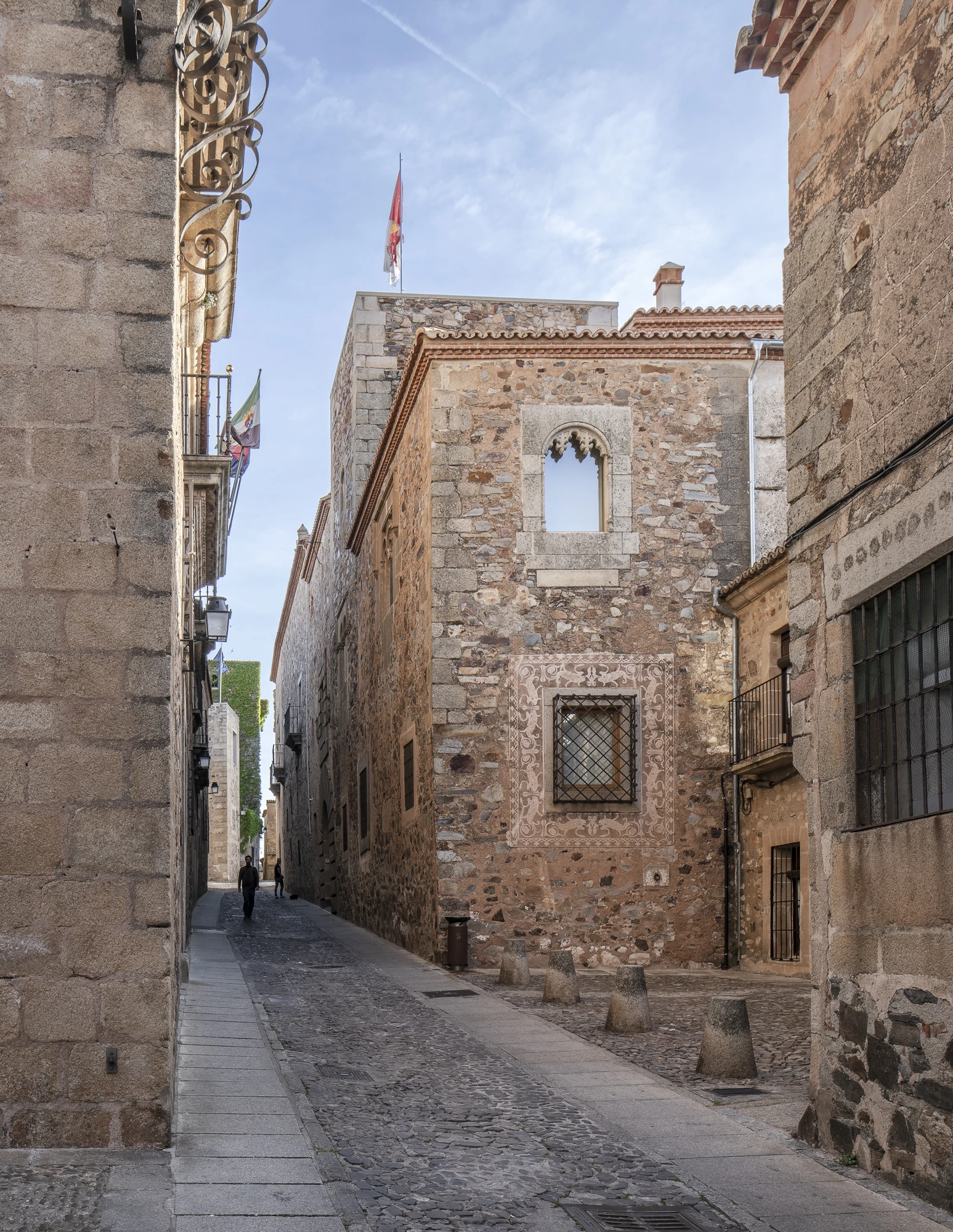
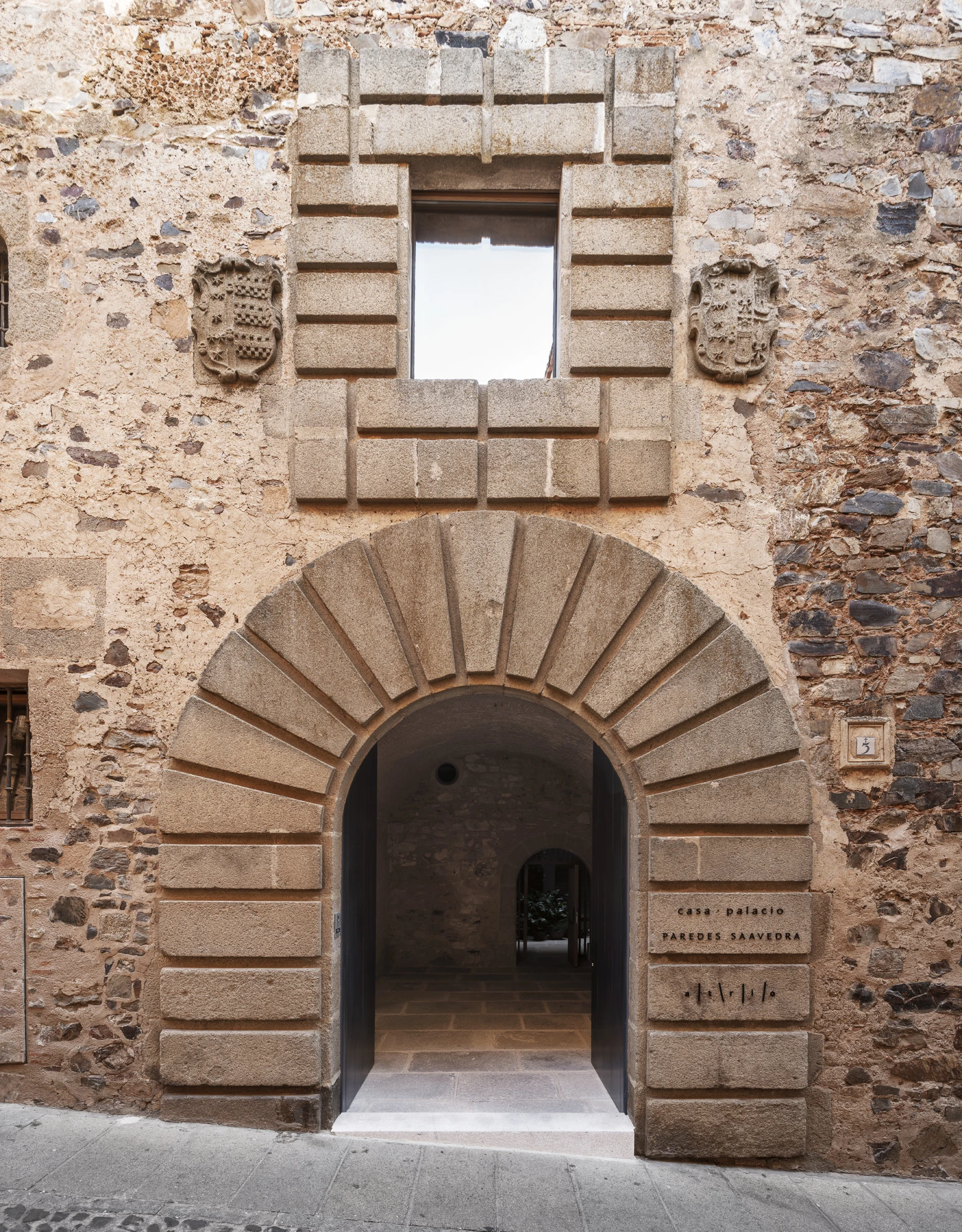
Built over different periods starting in the 15th century, the Paredes-Saavedra House is a small-size urban fortress within the walled area of the city of Cáceres.
The building is organized on three floors around a small asymmetrical interior atrium and with a rear courtyard, and is the result of the concatenation of spaces, built in different periods, which form an asymmetrical organization of structural load-bearing walls within which the tower, lopped in times of the Catholic Monarchs, can be considered a unique element of the civil architecture of Cáceres.
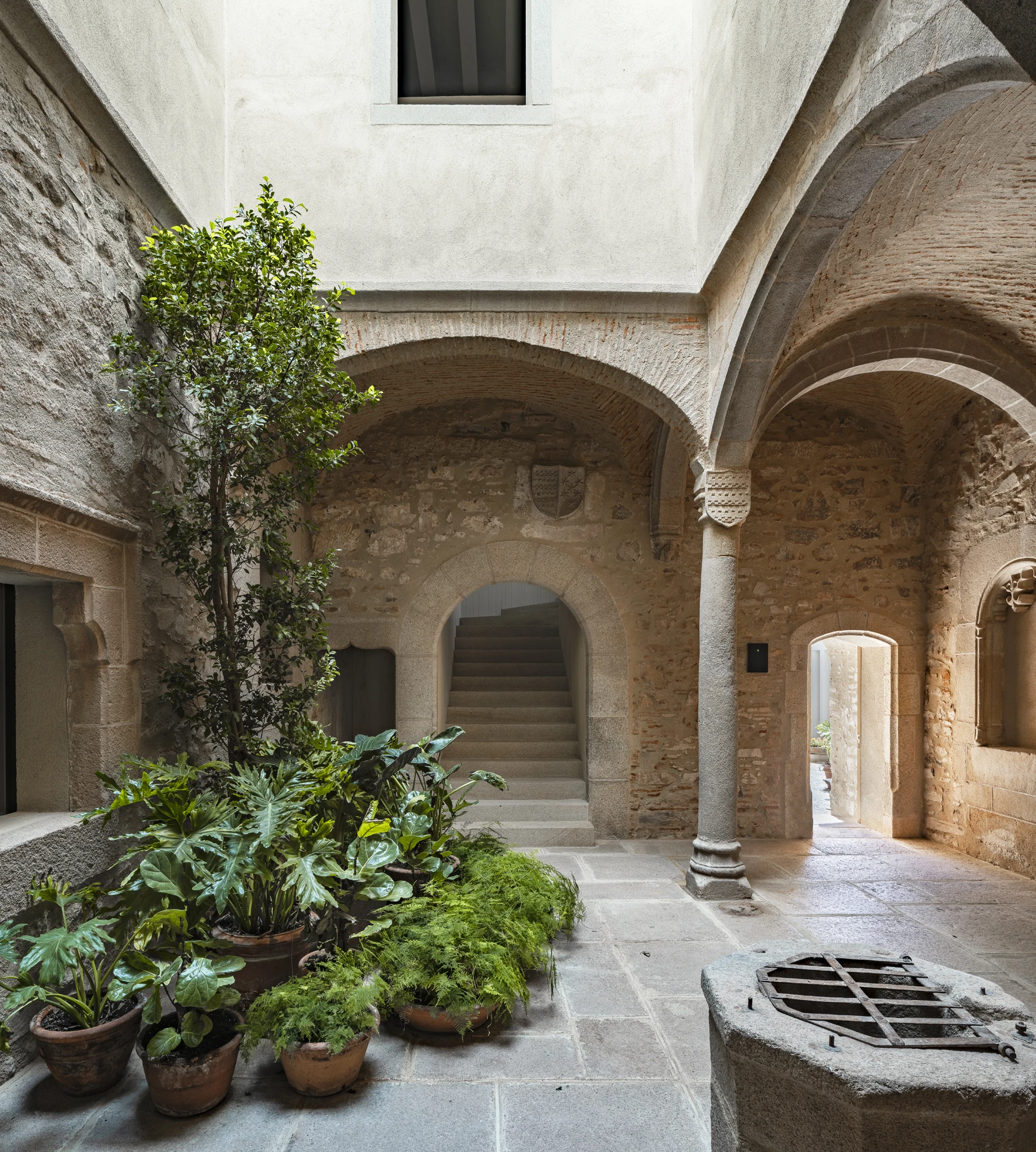
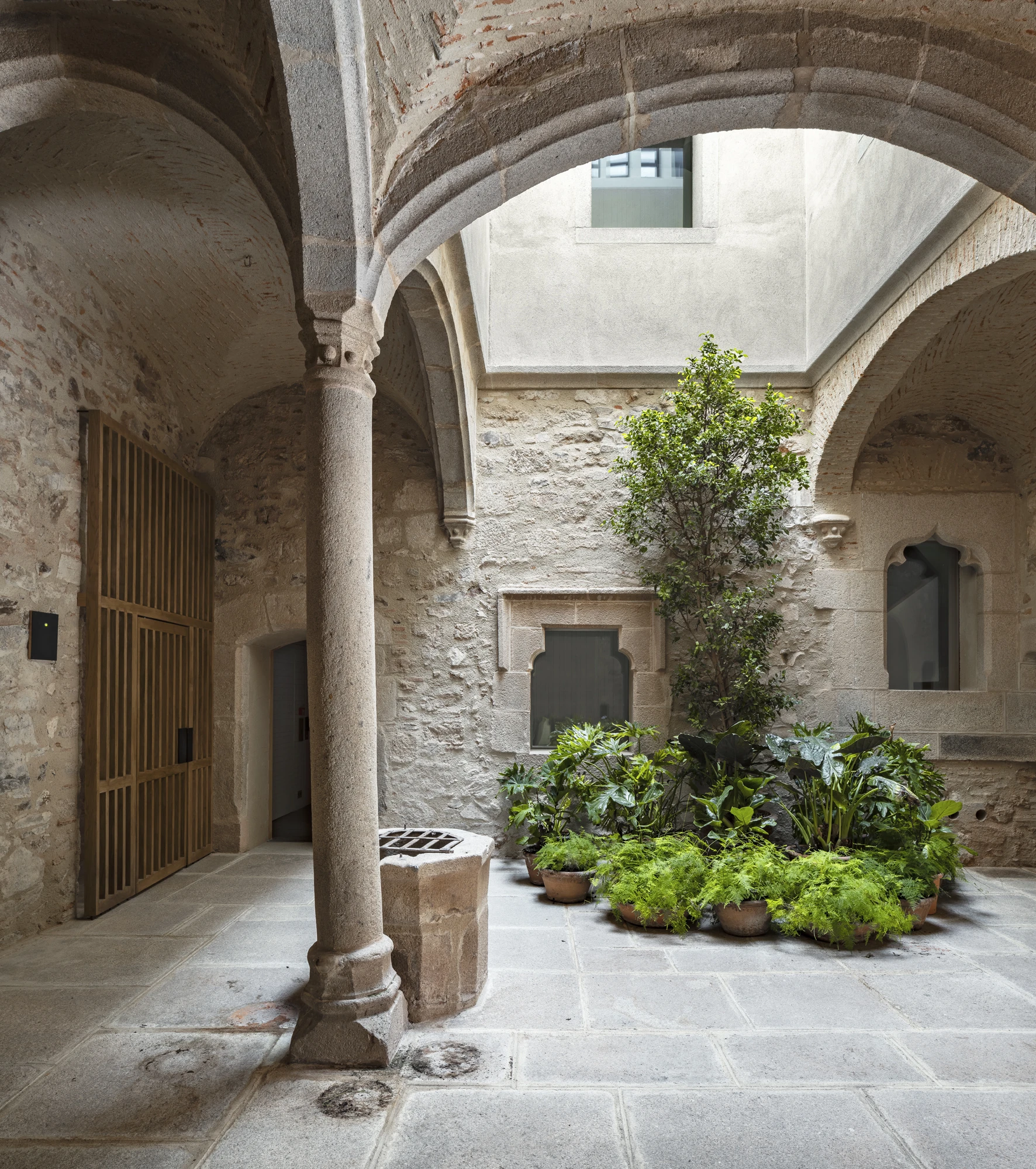
The project to renovate and refurbish the Paredes-Saavedra House has been carried out with the purpose of making space for ten new rooms to complement the offer of the Hotel Atrio Relais Chateaux, an establishment with another fourteen rooms currently, and which is situated very close to the building. These new rooms adapt in different ways to the original stately house, and try to make the most of the existing spaces, taking into consideration the specific conditions of each one of them.
The intervention is based on the respect for the original structure of the historic building, with the incorporation of a contemporary architecture that, as if it were un undergarment, gradually lines the existing surfaces with timber vaults on the ground level, and coffered ceilings, also made of wood, on the two upper floors.
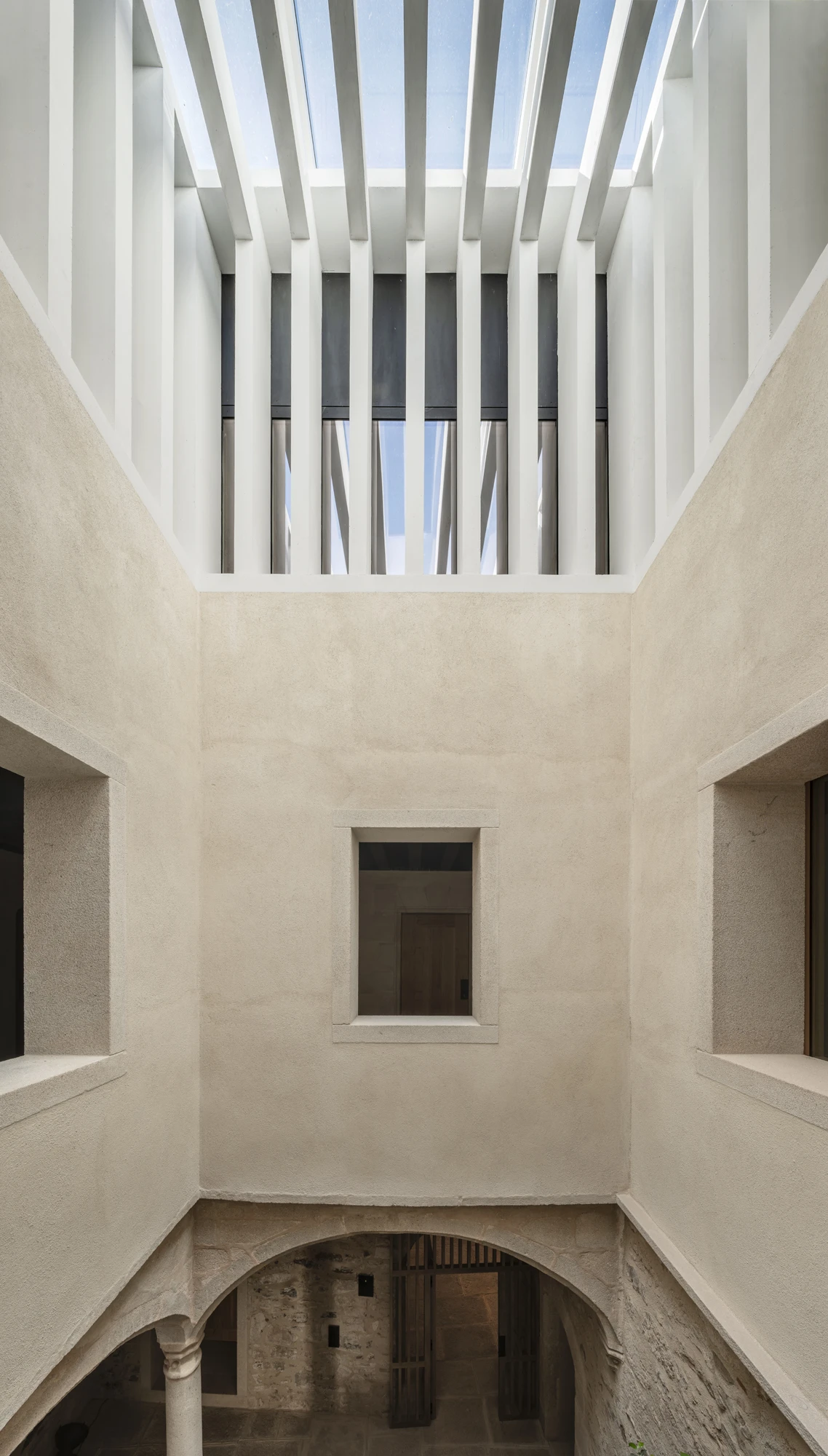
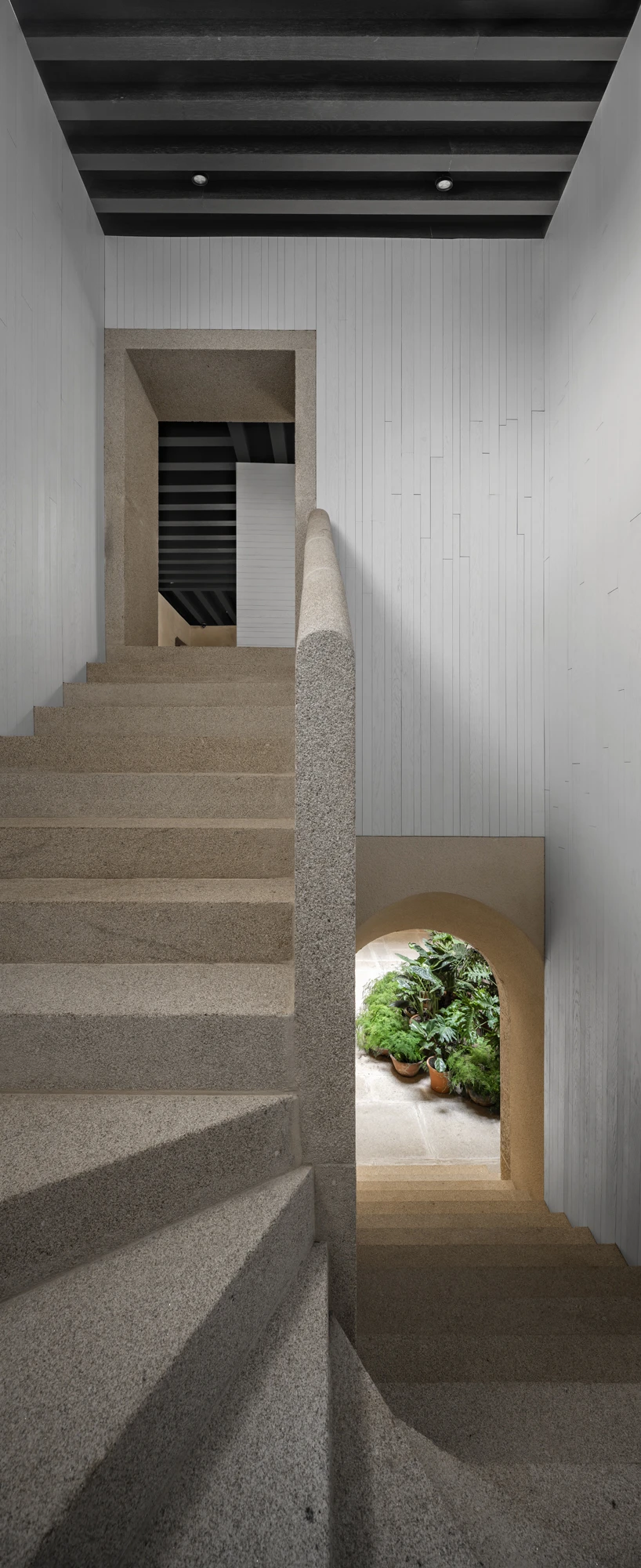
The refurbishment clearly defines a diagonal sequence of spaces that goes from Calle Ancha to Calle San Pedro, passing through the vaulted hallway – which includes a site-specific work by the Portuguese artist José Pedro Croft –, the asymmetrical atrium with a sequence of brick vaults that rest on Doric columns, and the outdoor garden courtyard with a small pond. The project brings the tower back to its original height with the purpose of contributing to improve the profile of the city, especially on Calle Ancha.
The Paredes-Saavedra Palace House refurbishment project tries to rethink the city from the budgets that made it possible, imagining how this can be achieved in our days. In this way, the refurbishment is a proposal that respects the character of the place, and its main objective is to coexist in this environment with dignity, trying to combine tradition and contemporaneity.
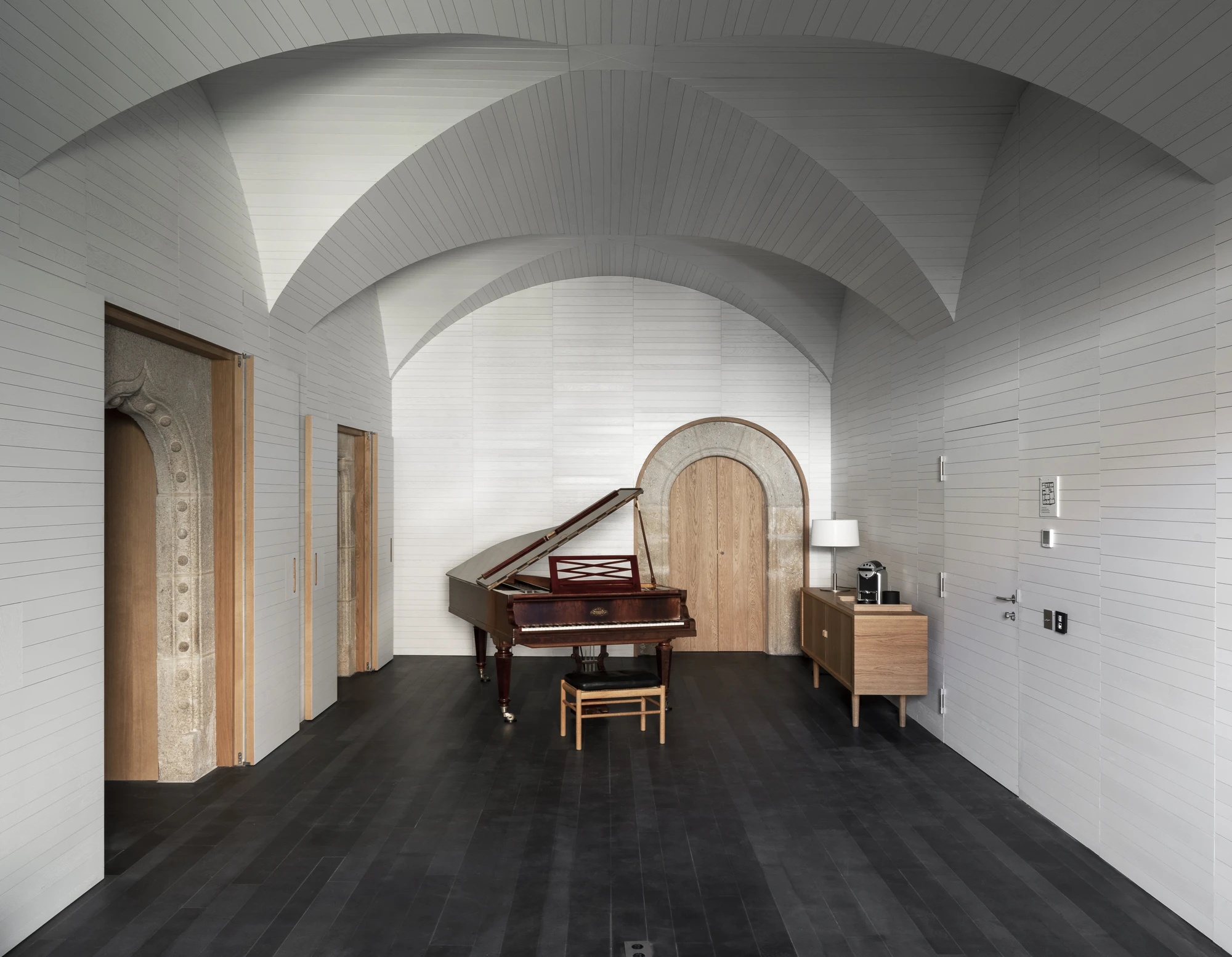
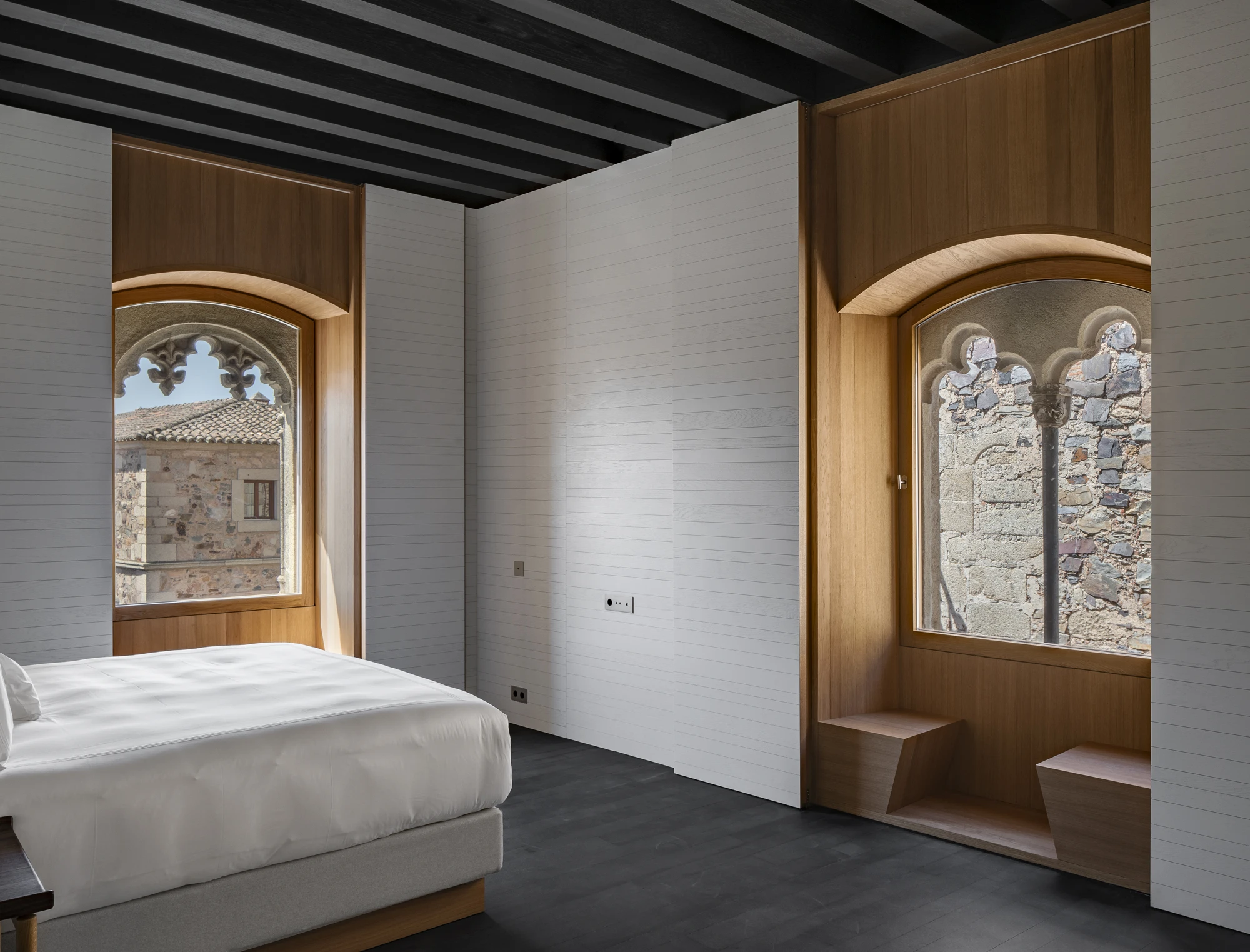
LICENSING AND COPYRIGHT ACQUISITION: Search and view in jesusgranada.eu is free and any different use outside here must be authorized. If you are a publisher, journalist, publicist or manufacturer interested in use photos from this project on your magazine, book, company or marketing campaign, you need to acquire copyrights about needed photos. Fill this form to obtain conditions and fees of copyrights.
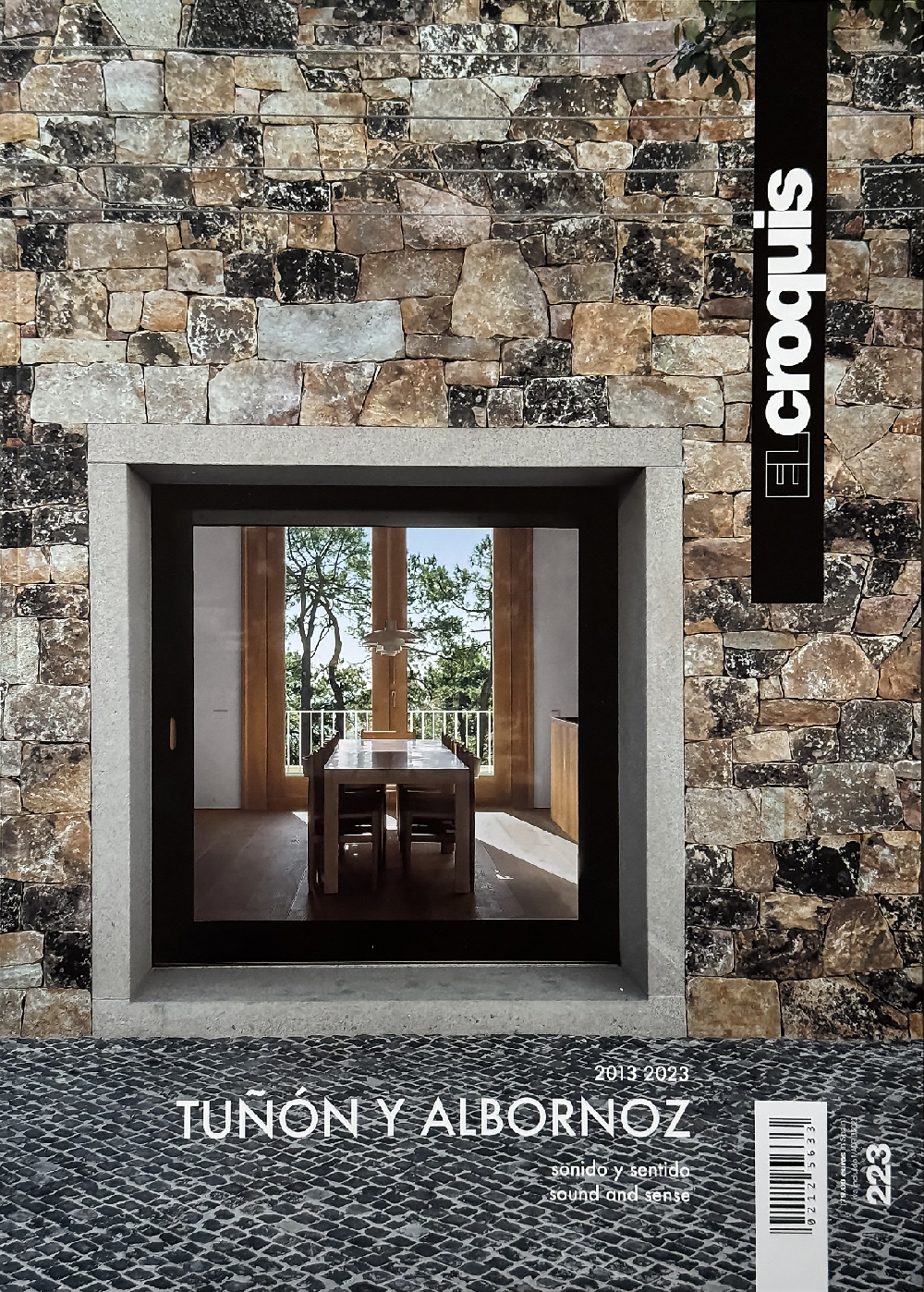
Commissioned by ‘El Croquis’ publishers:
El Croquis 223 – Tuñón y Albornoz
Tuñón y Albornoz Arquitectos is an architecture firm based in Madrid, dedicated to the encounter of the practice of design and construction with theory and teaching. Directed by Emilio Tuñón and Carlos Martínez de Albornoz, Tuñón y Albornoz Arquitectos emerged as a natural evolution of Mansilla + Tuñón Arquitectos following the death of the architect Luis M. Mansilla in 2012.
332 pages 24 x 34 cm – 2,5 Kg
